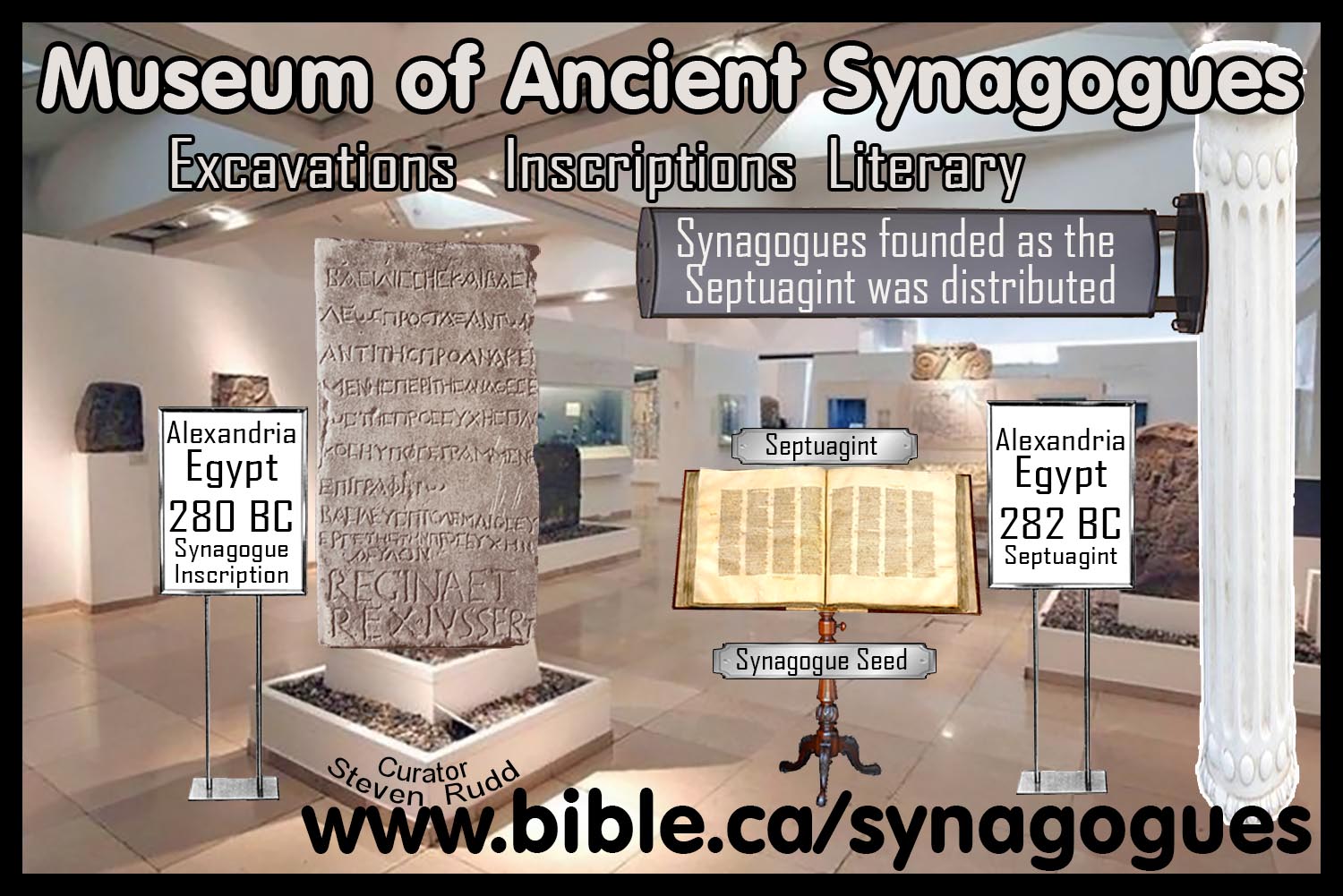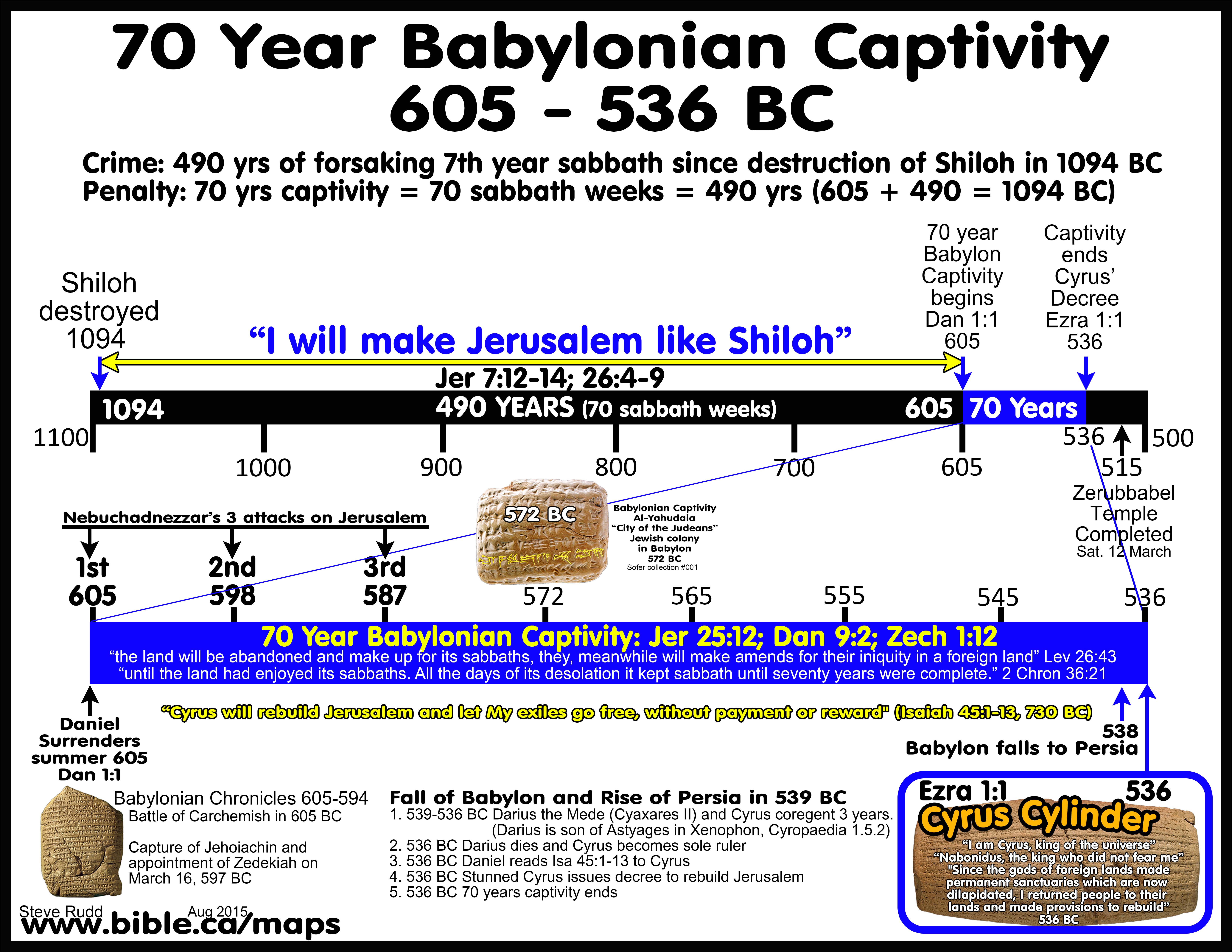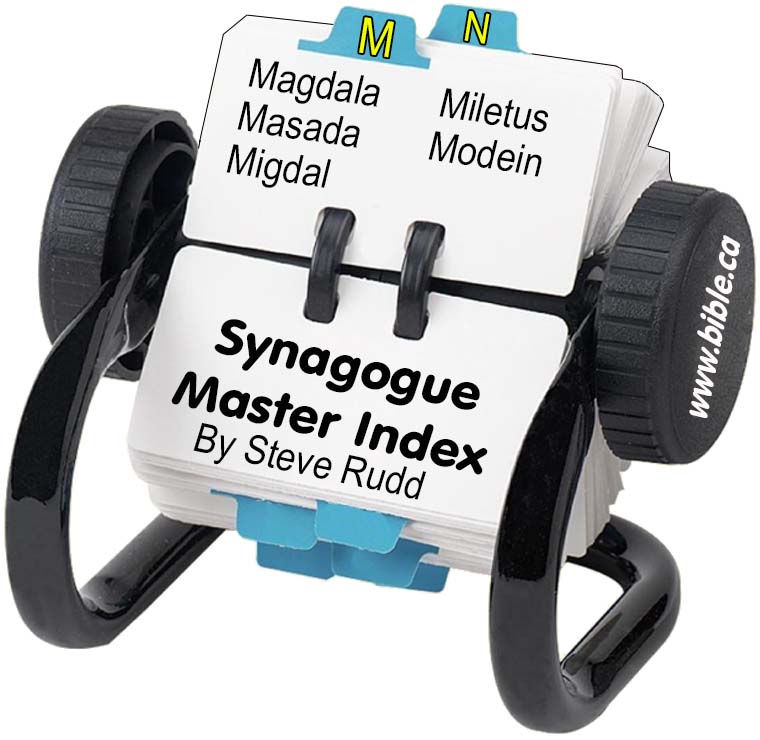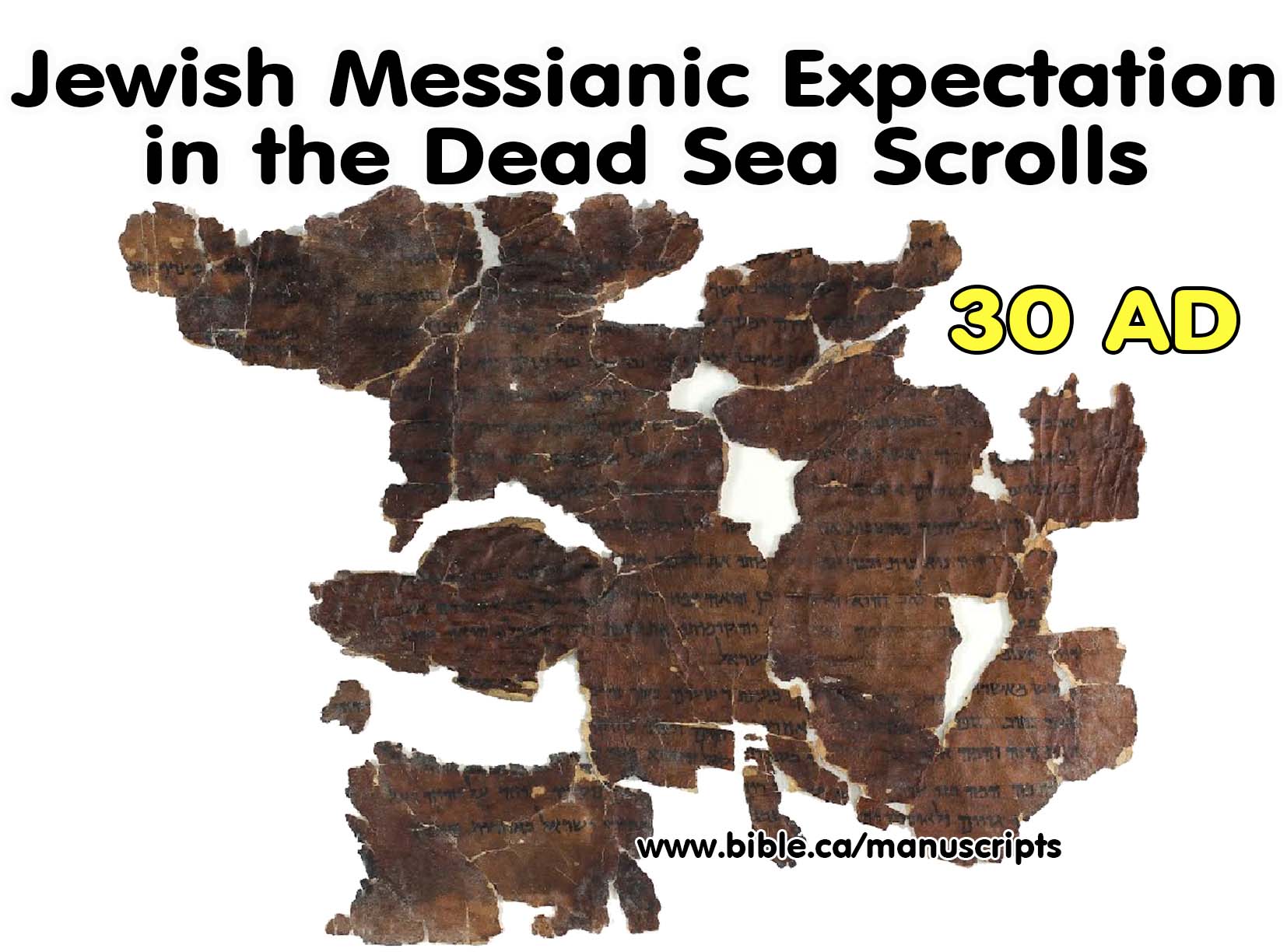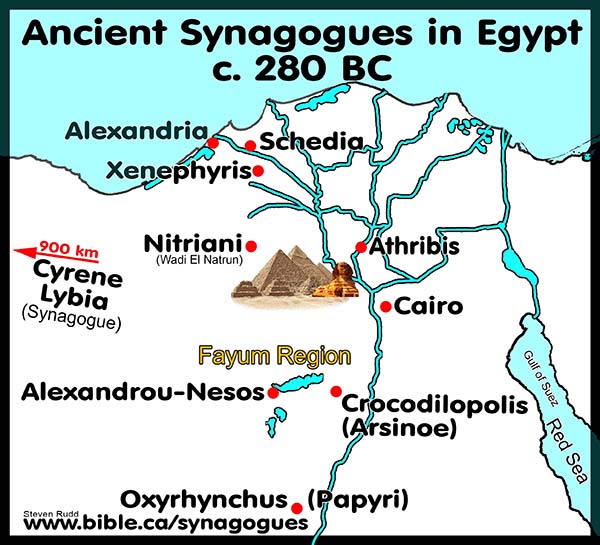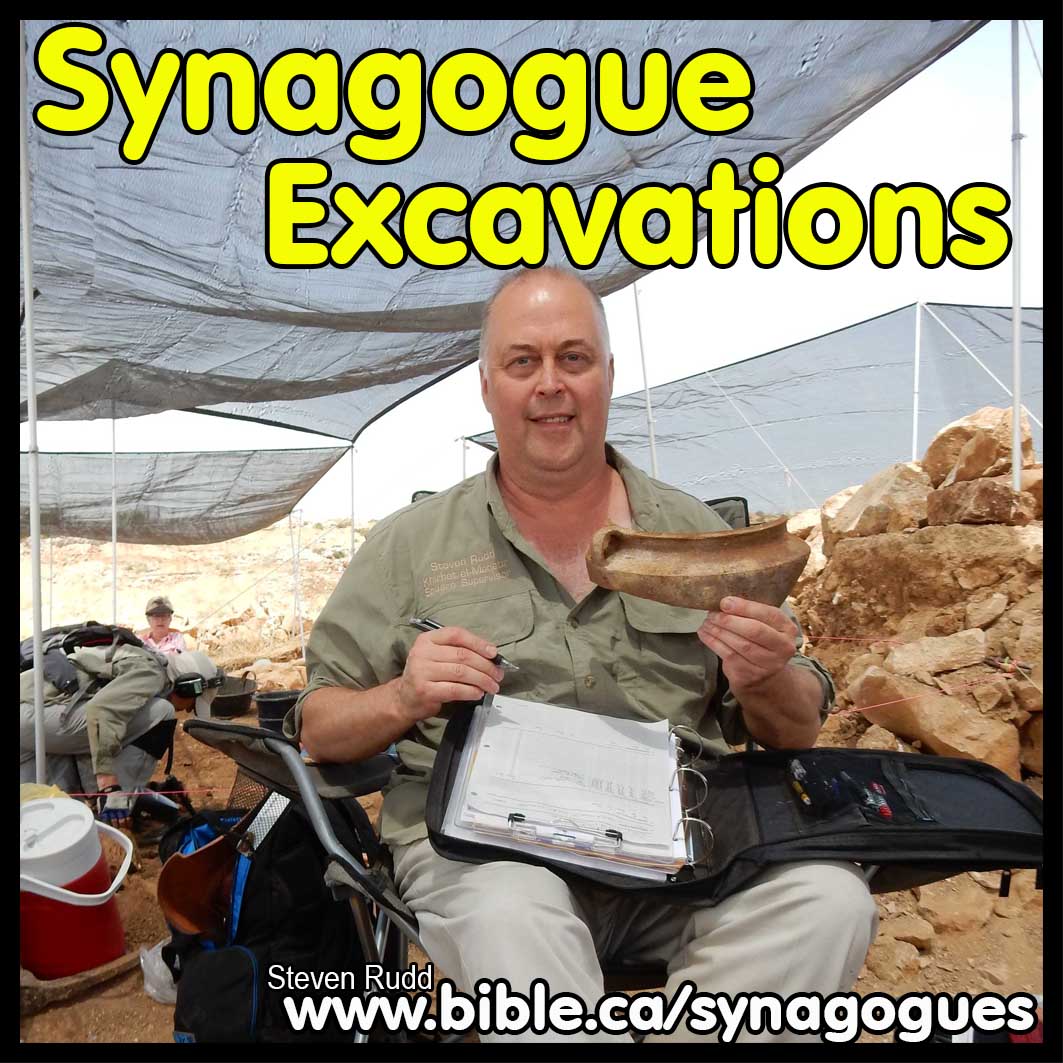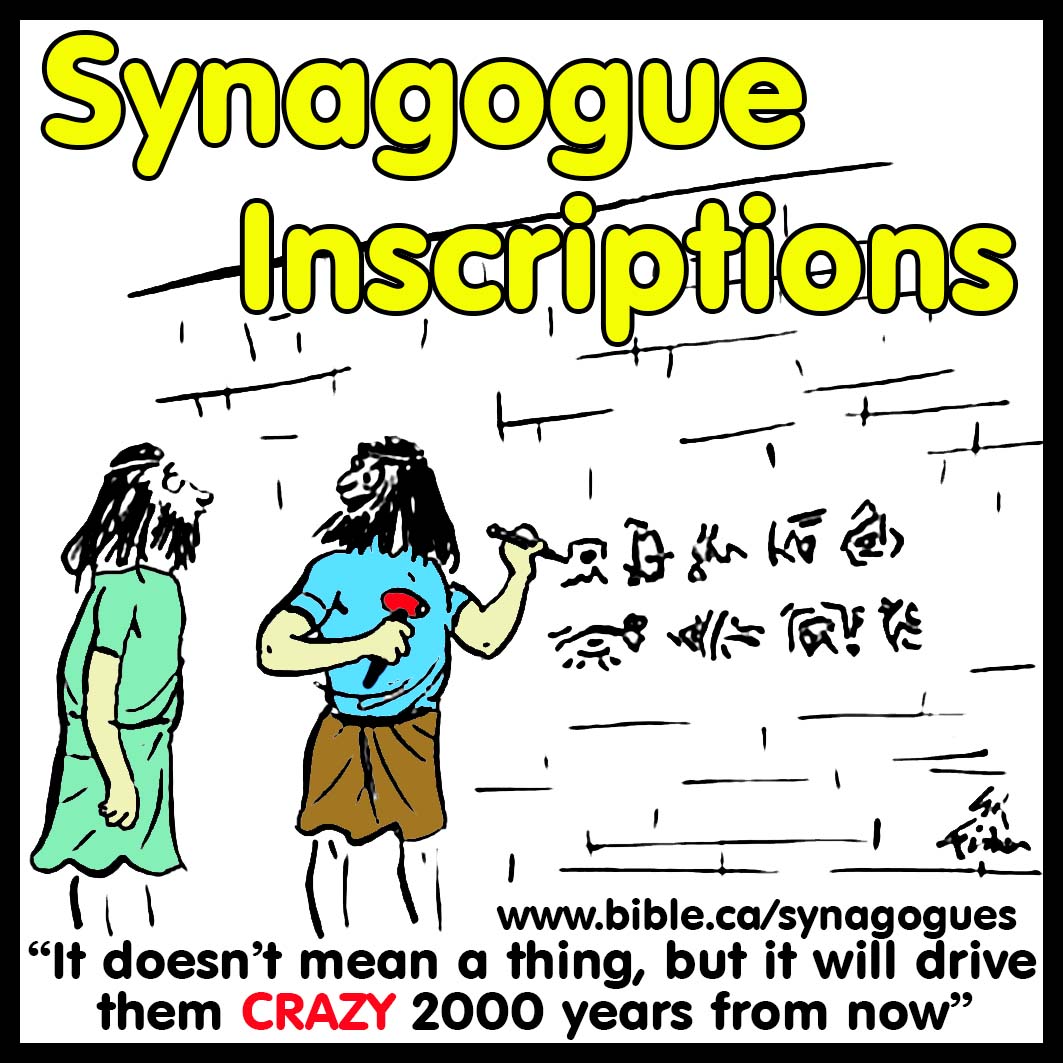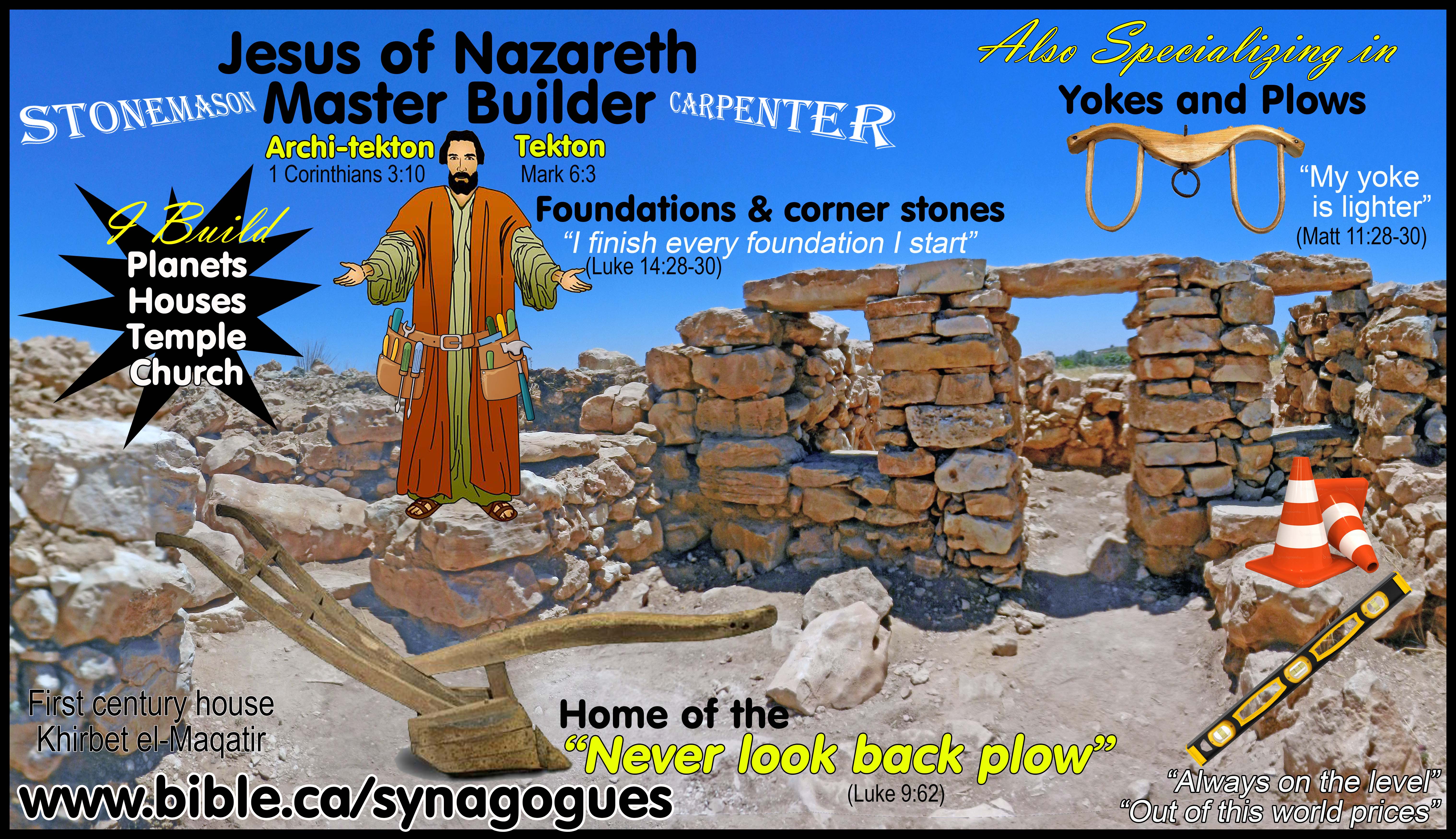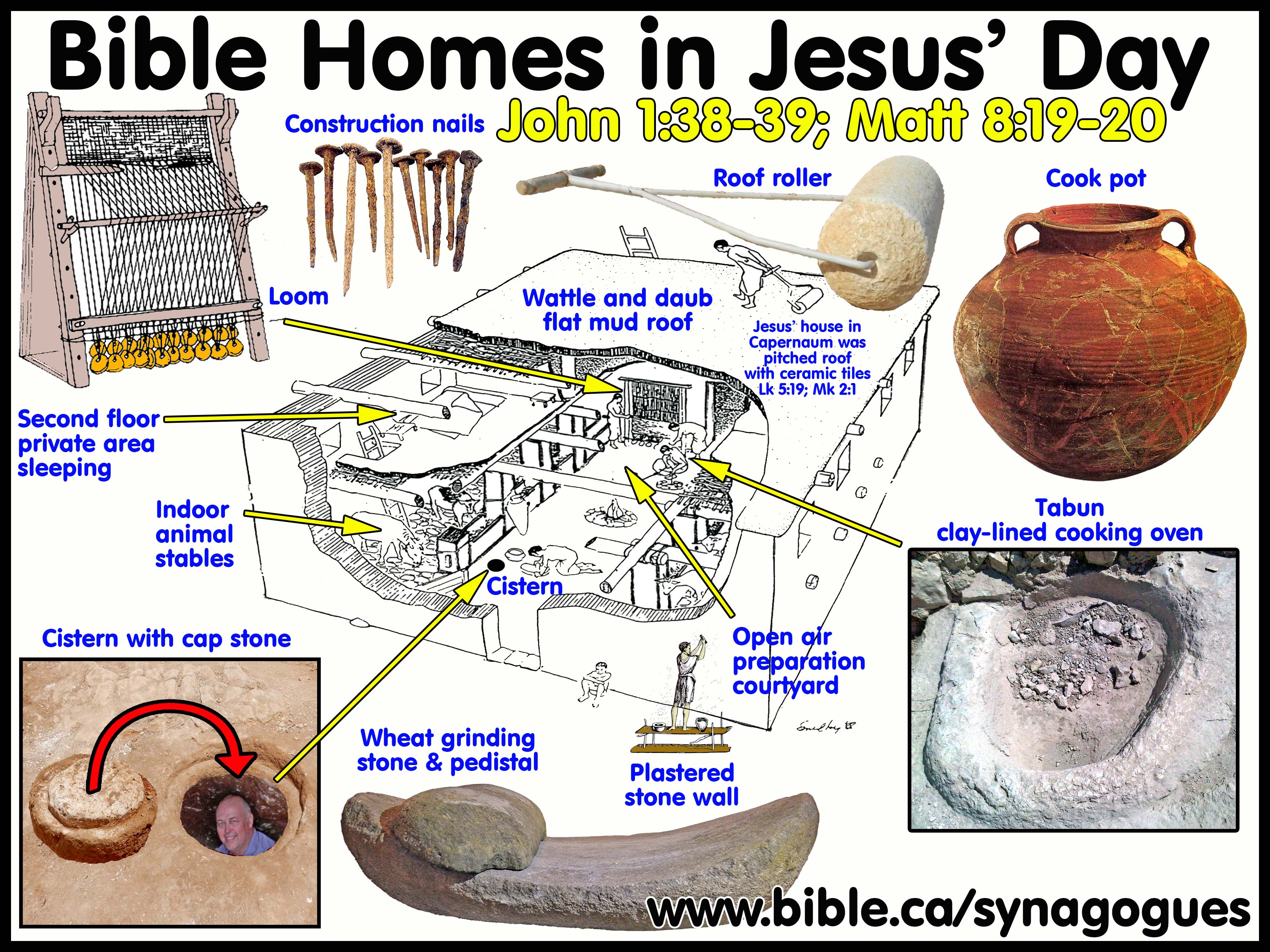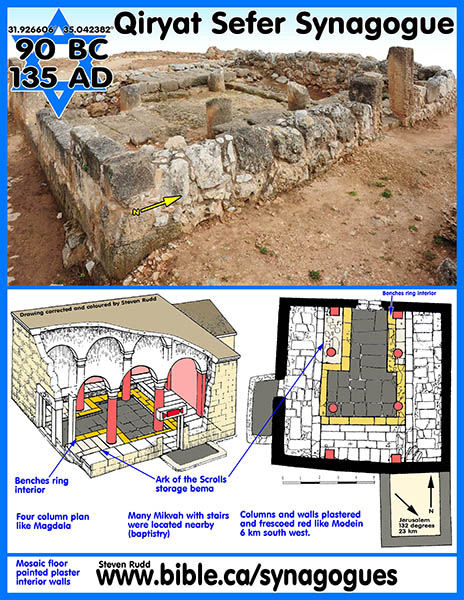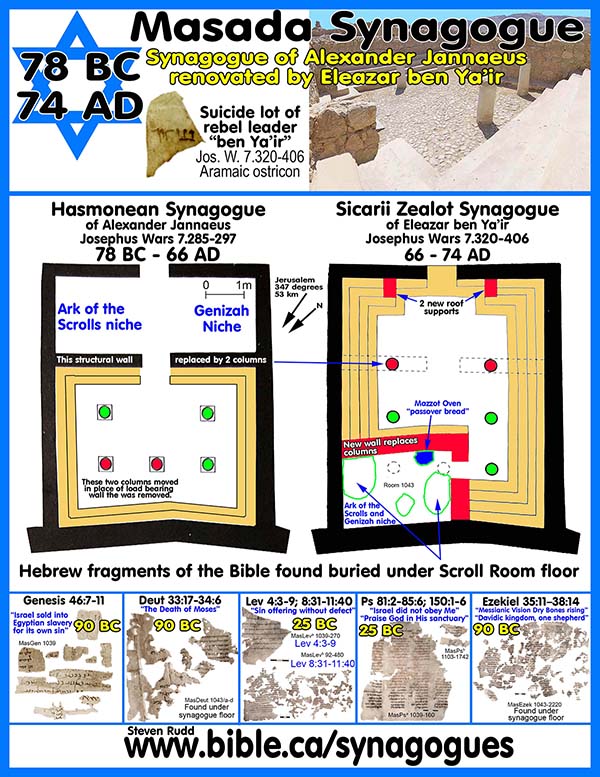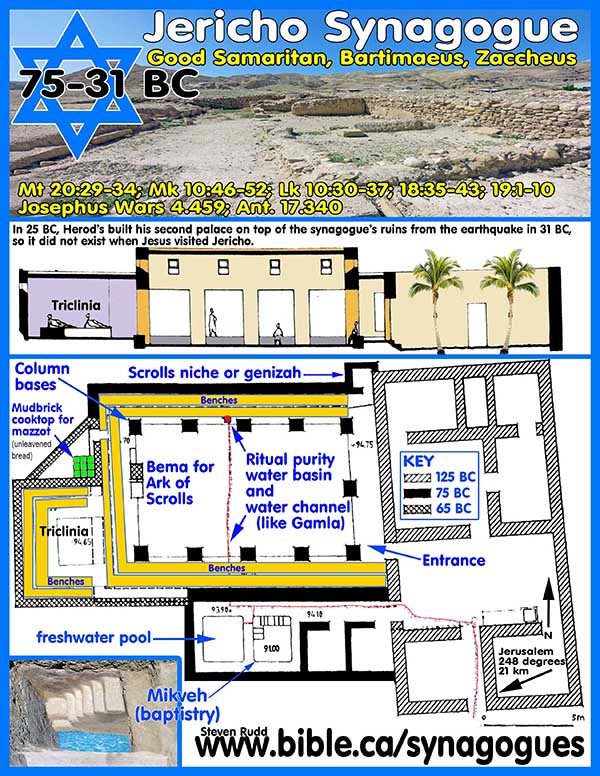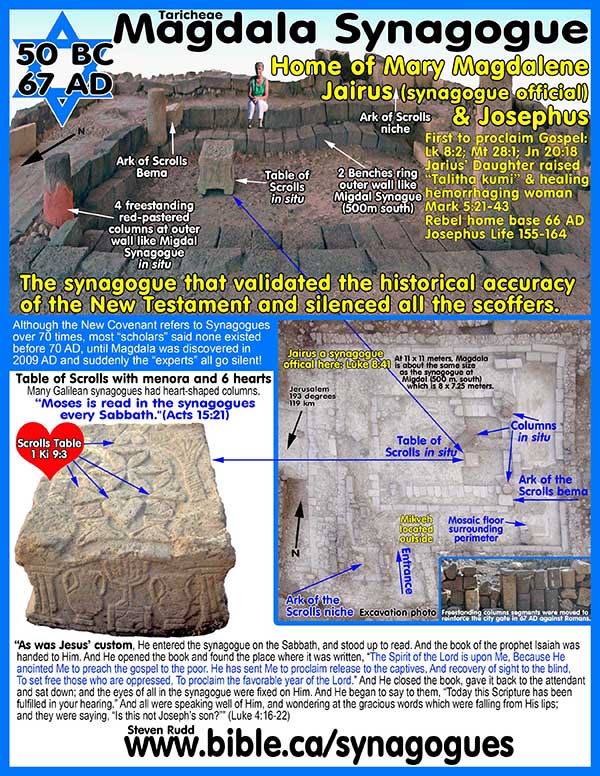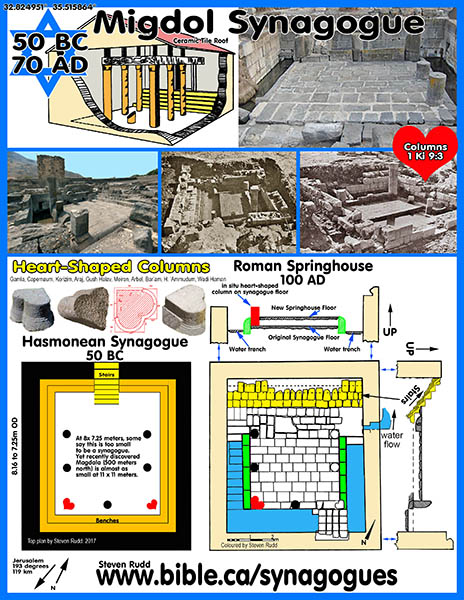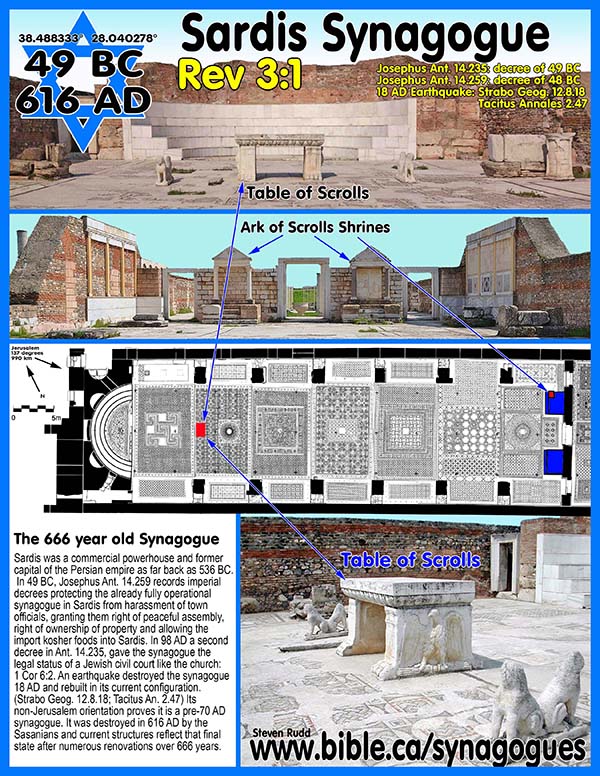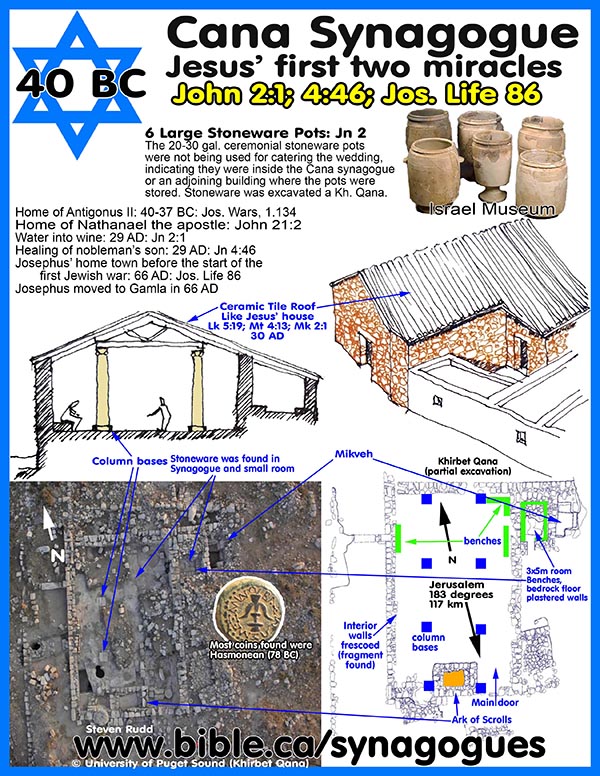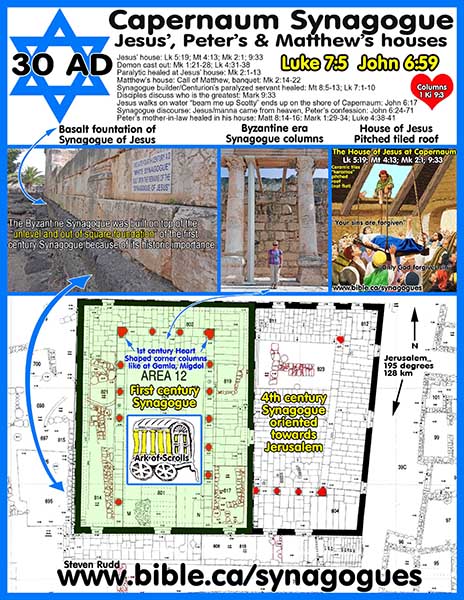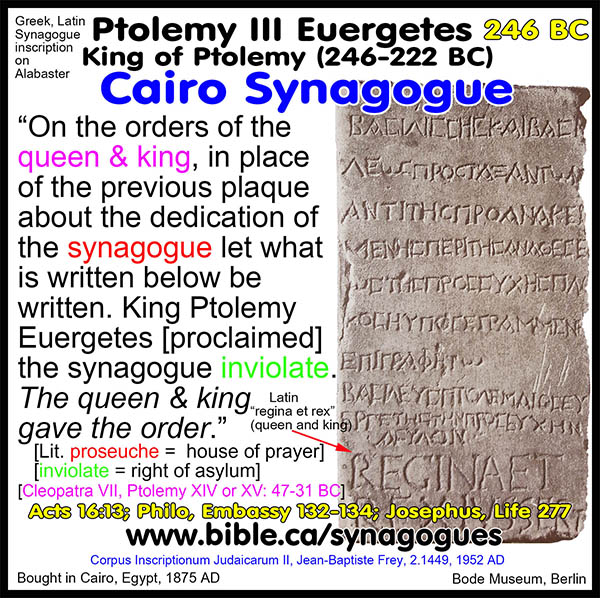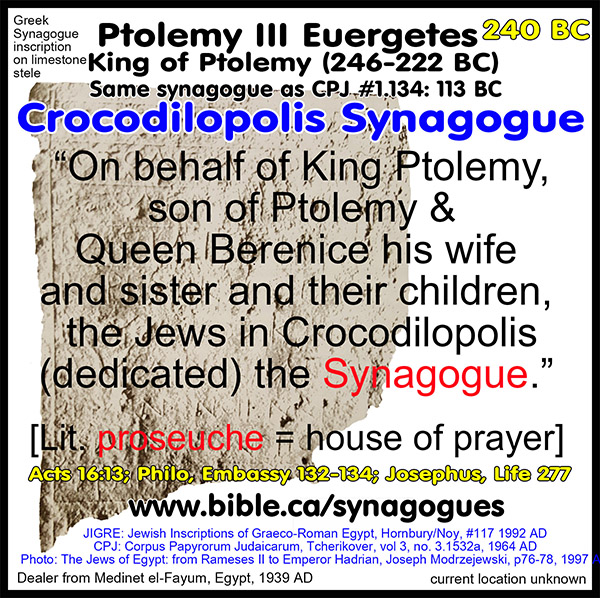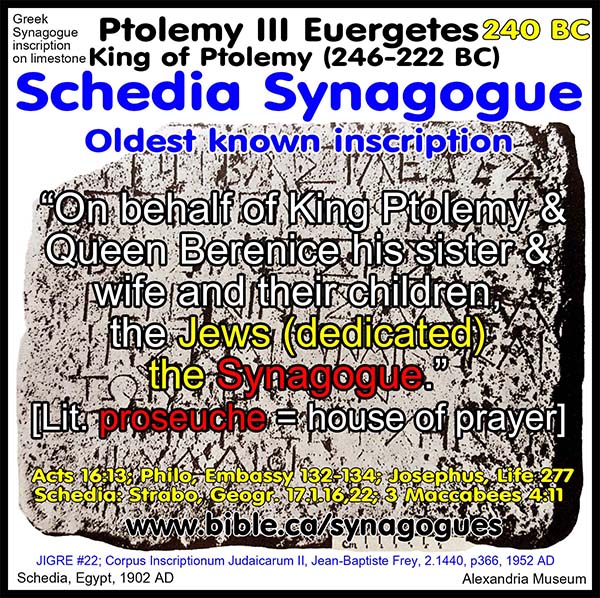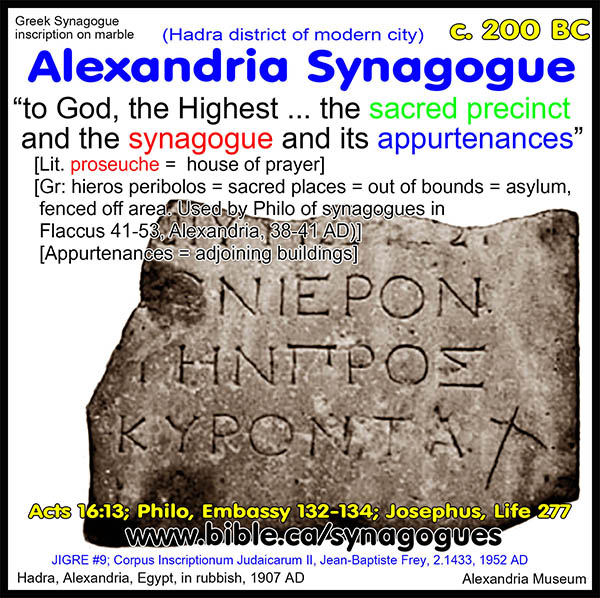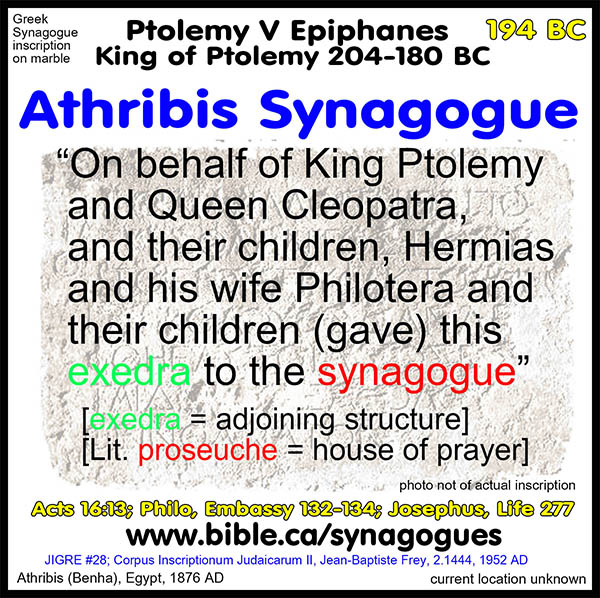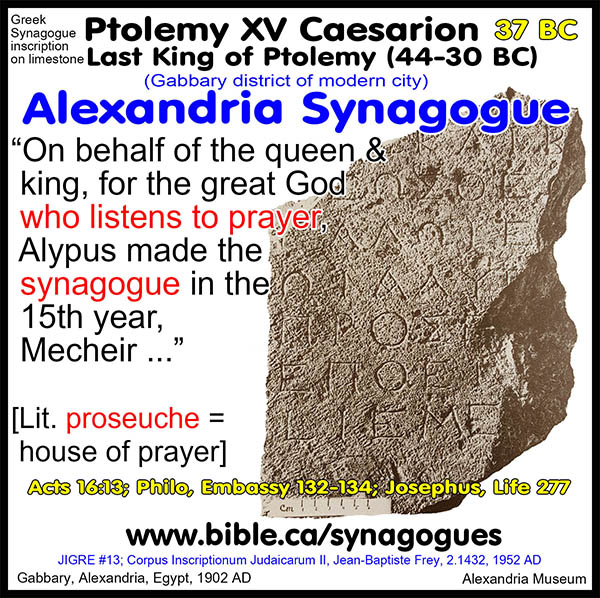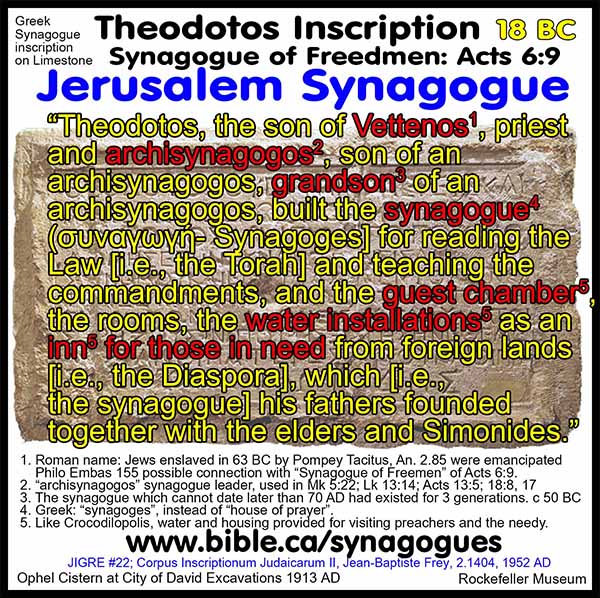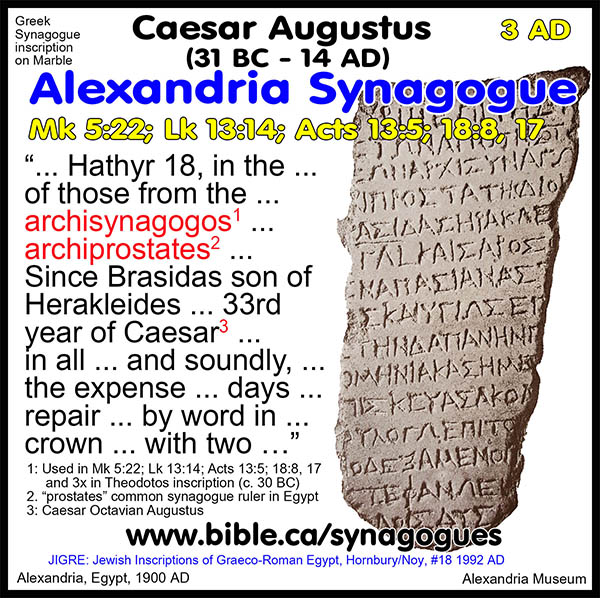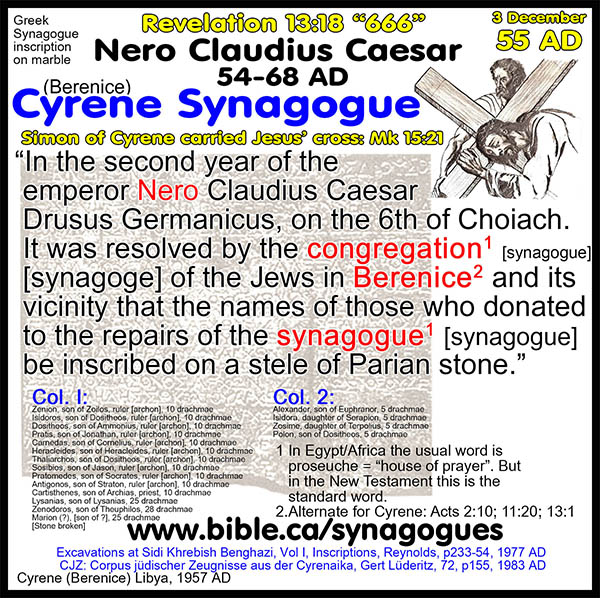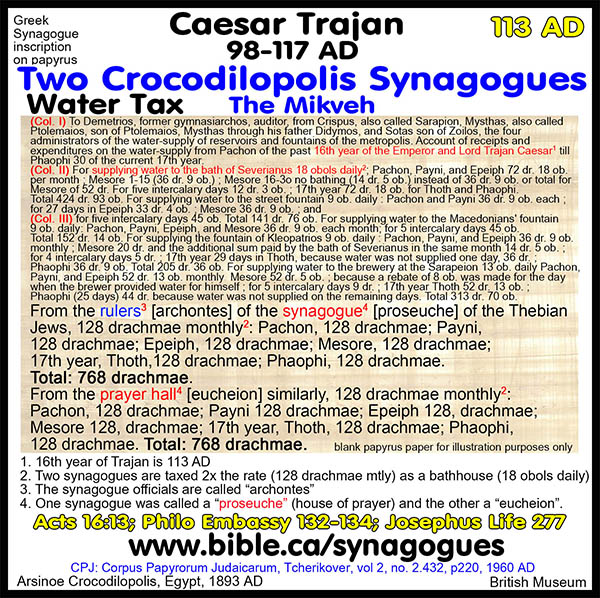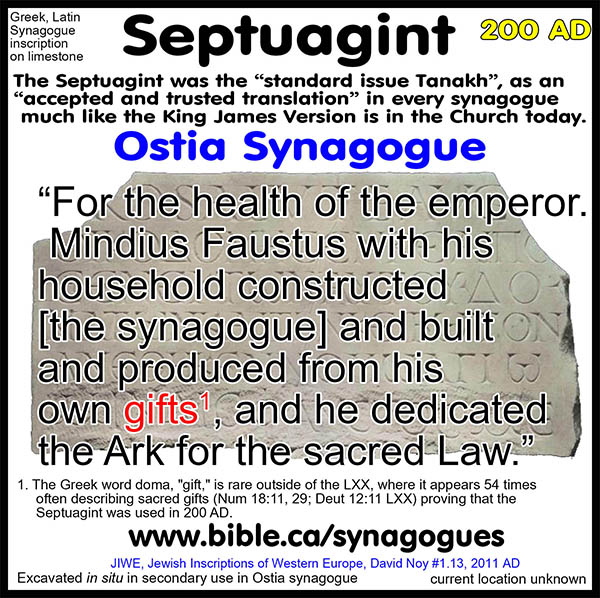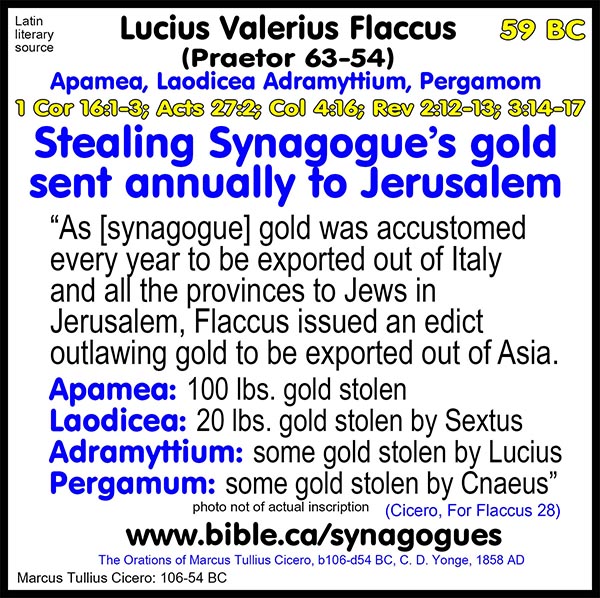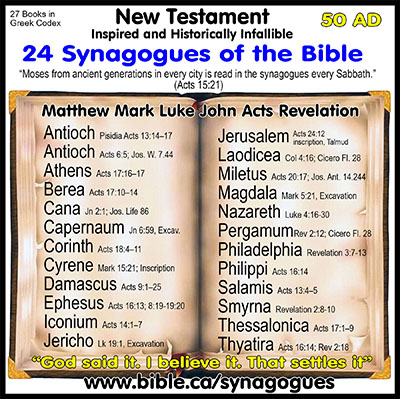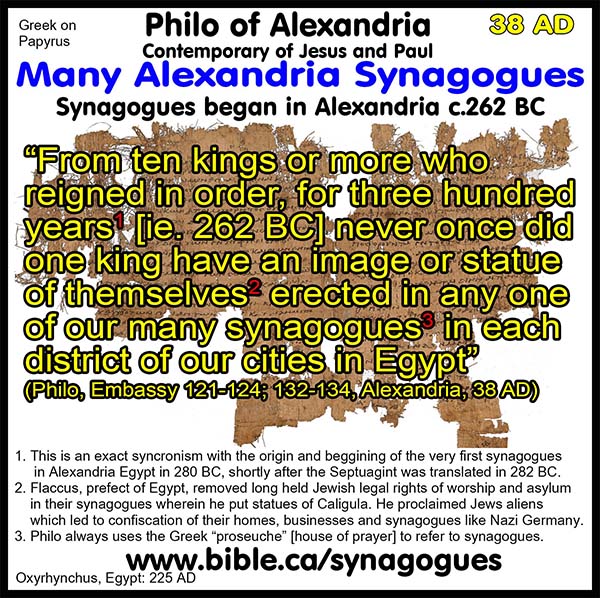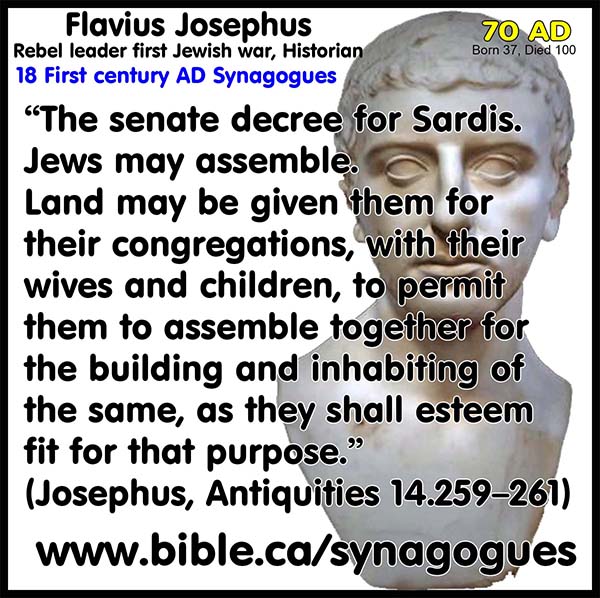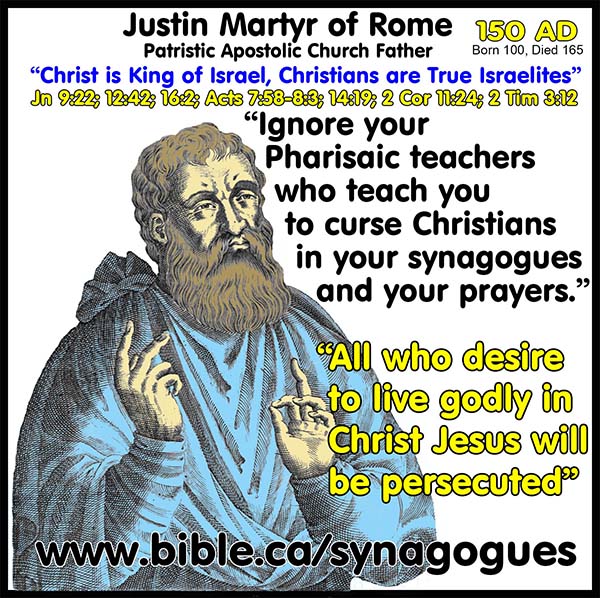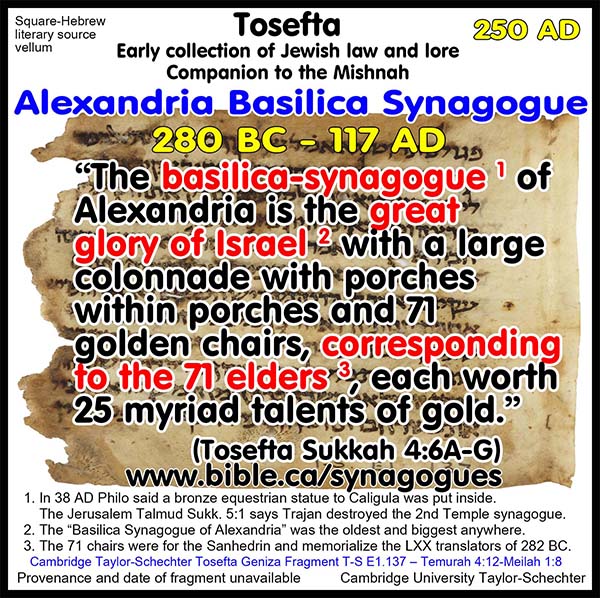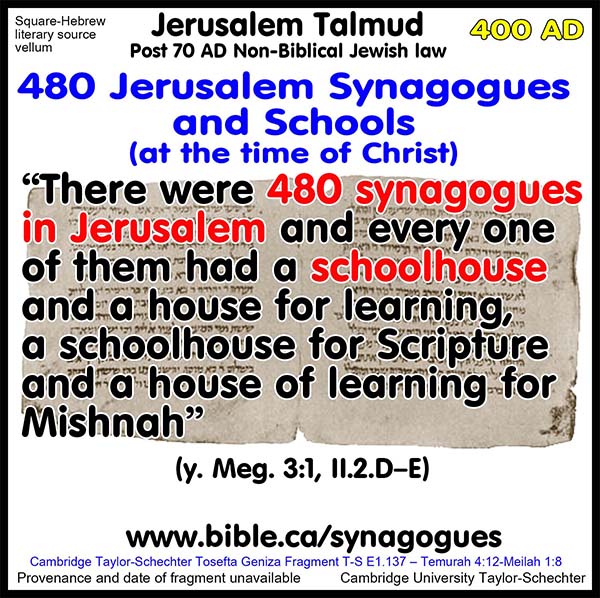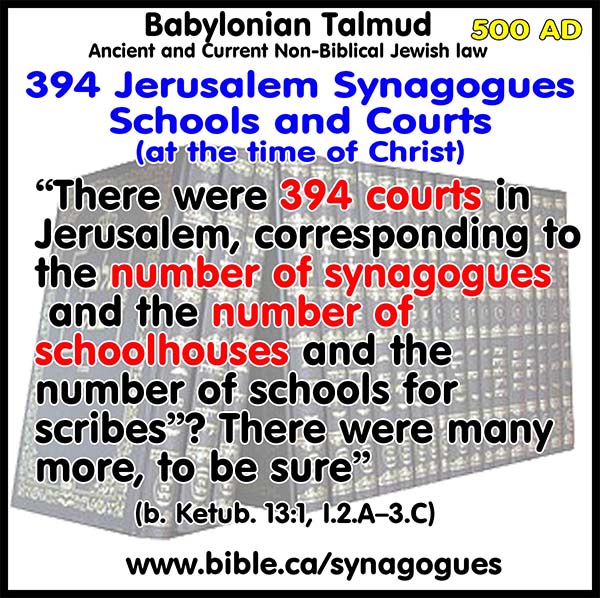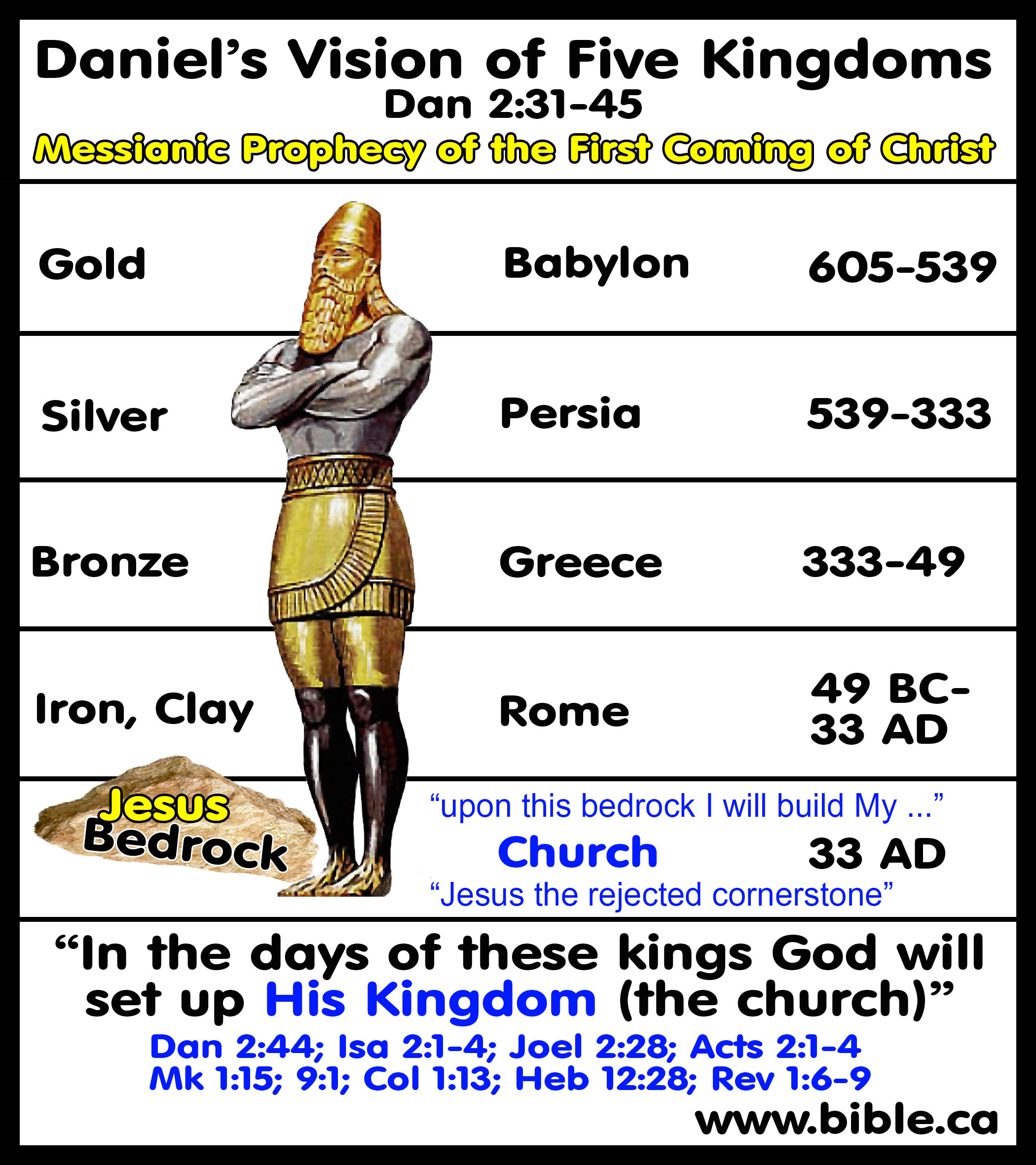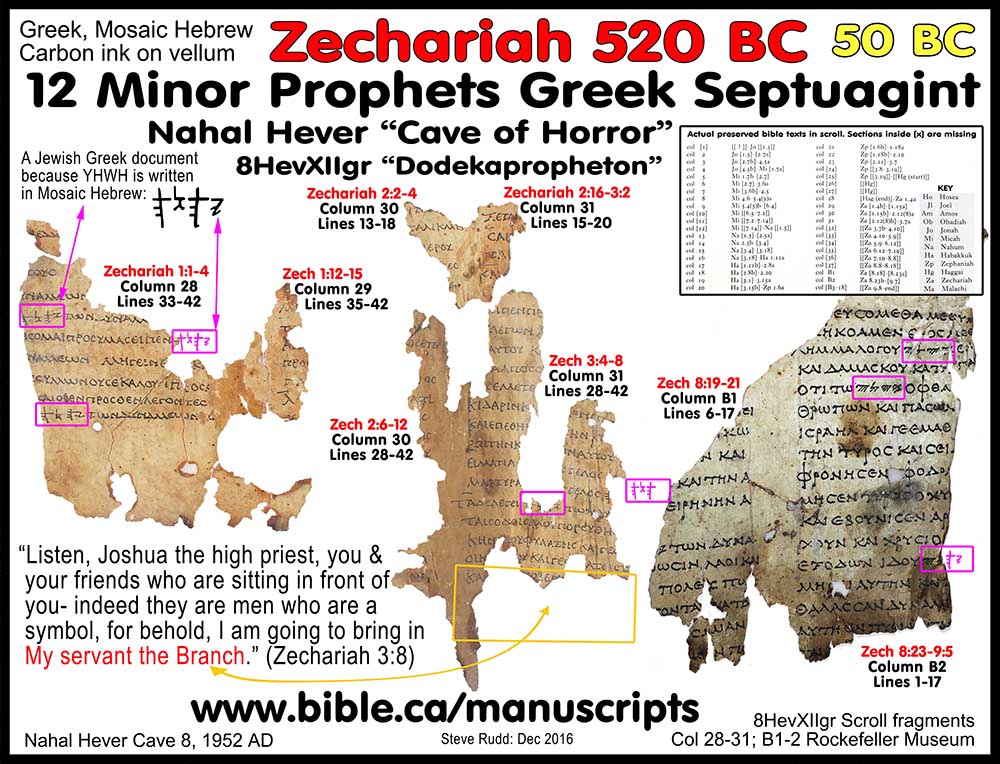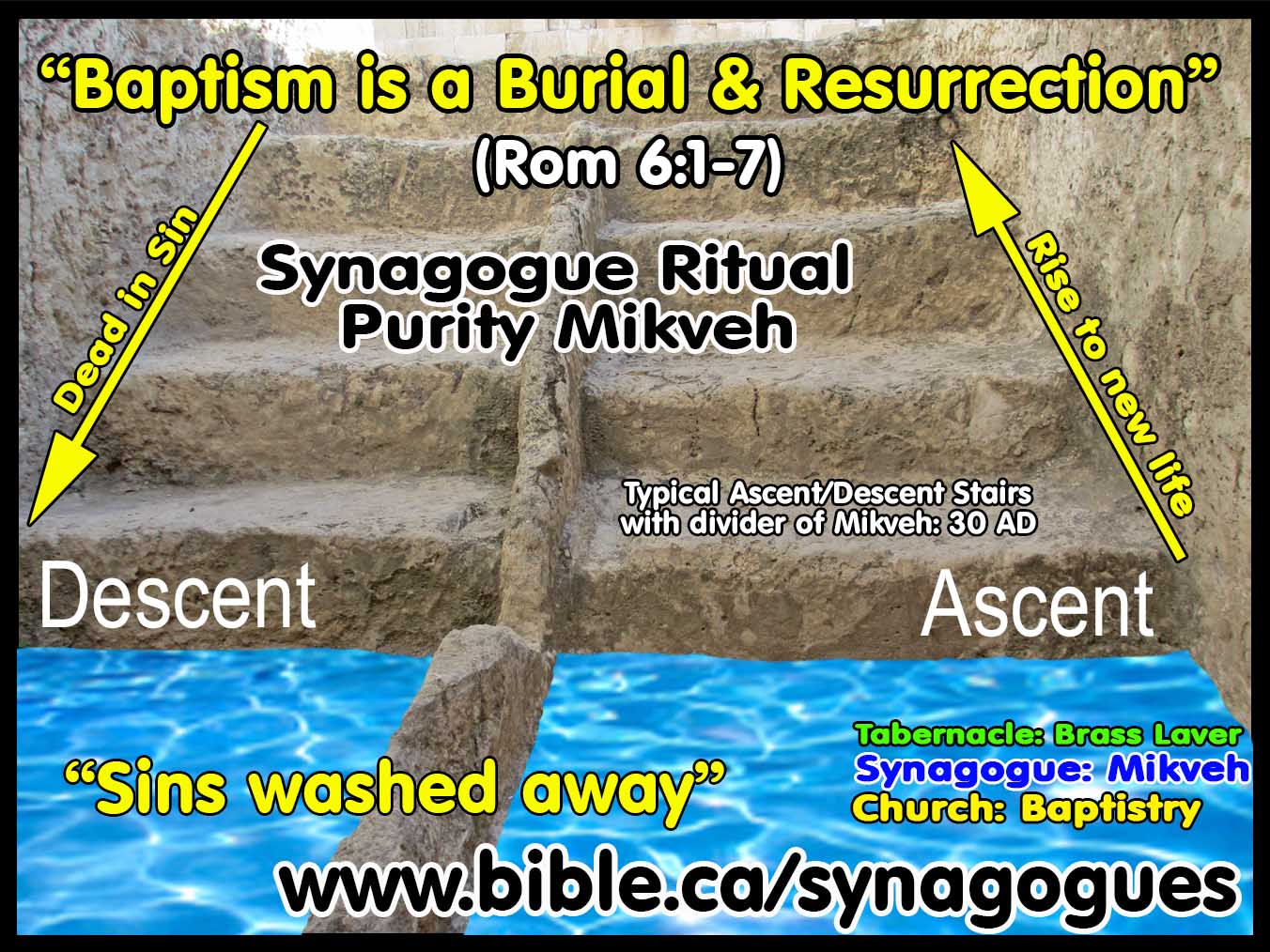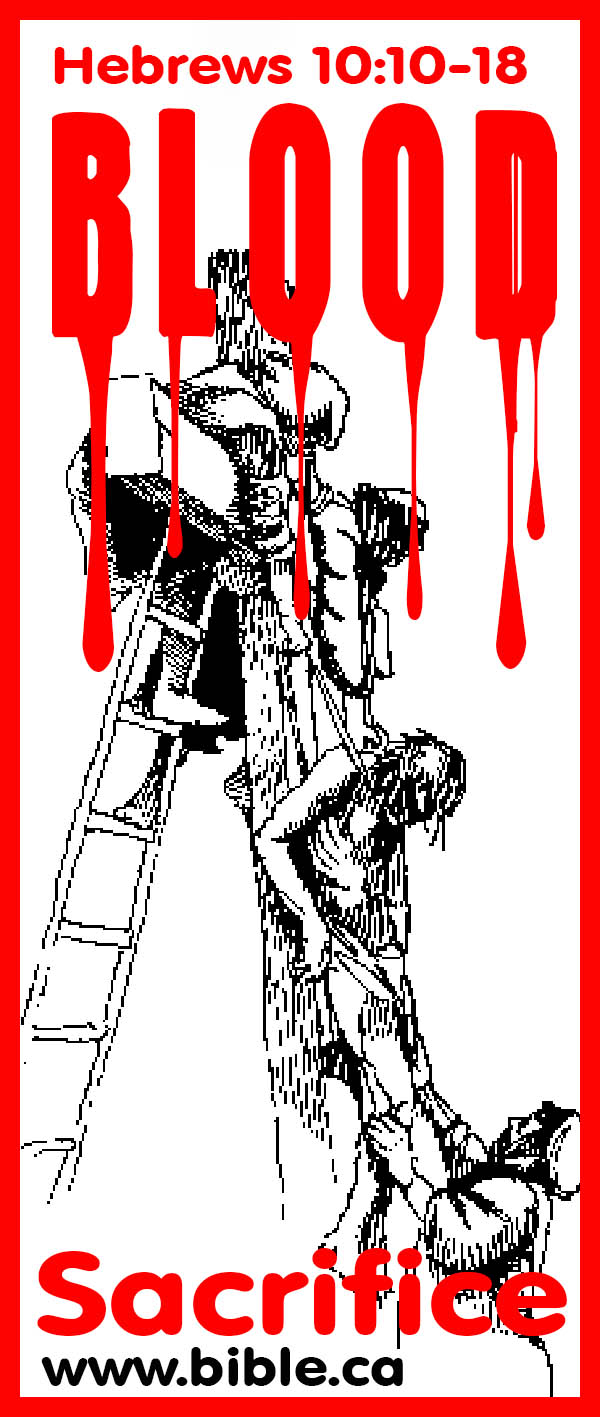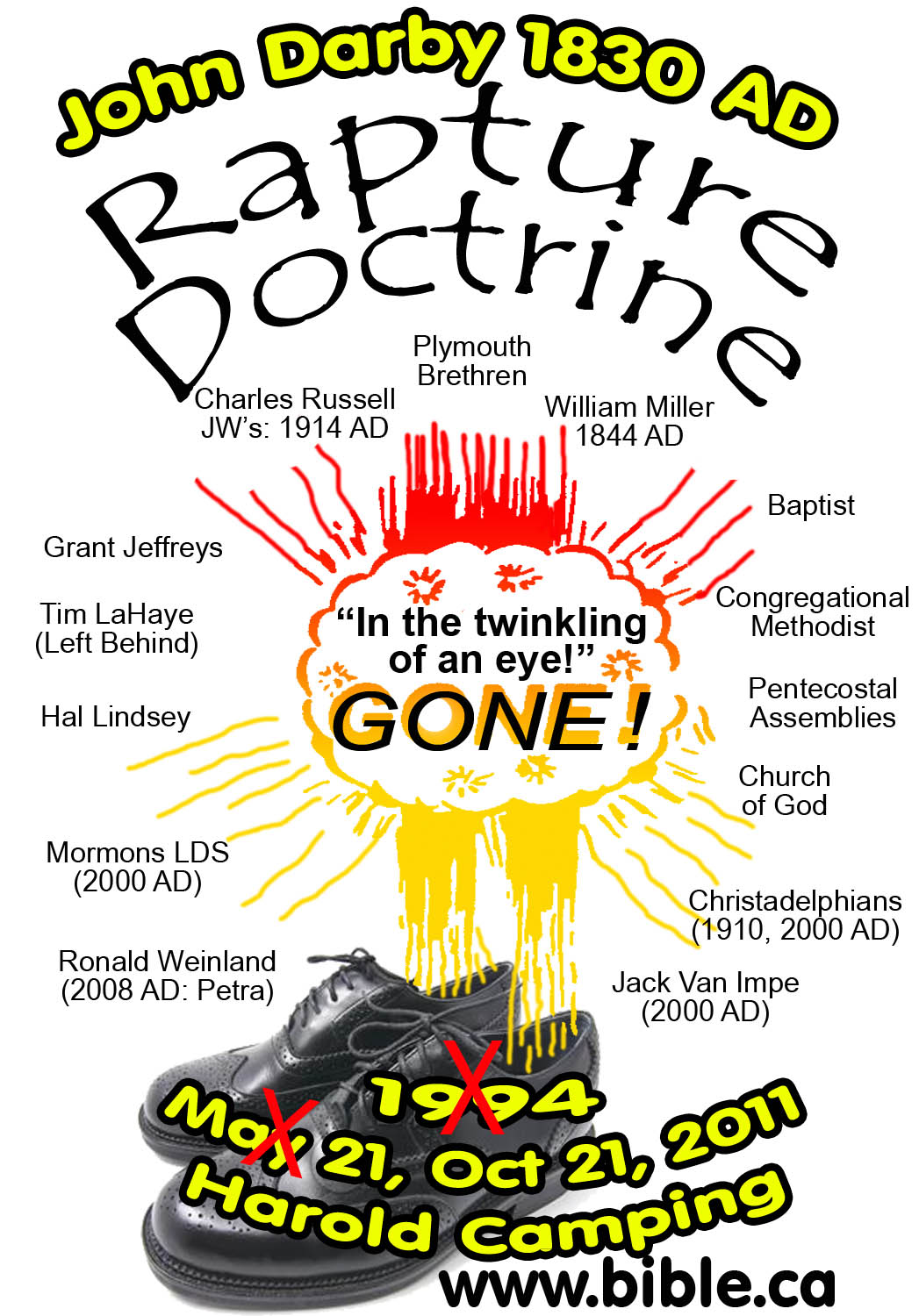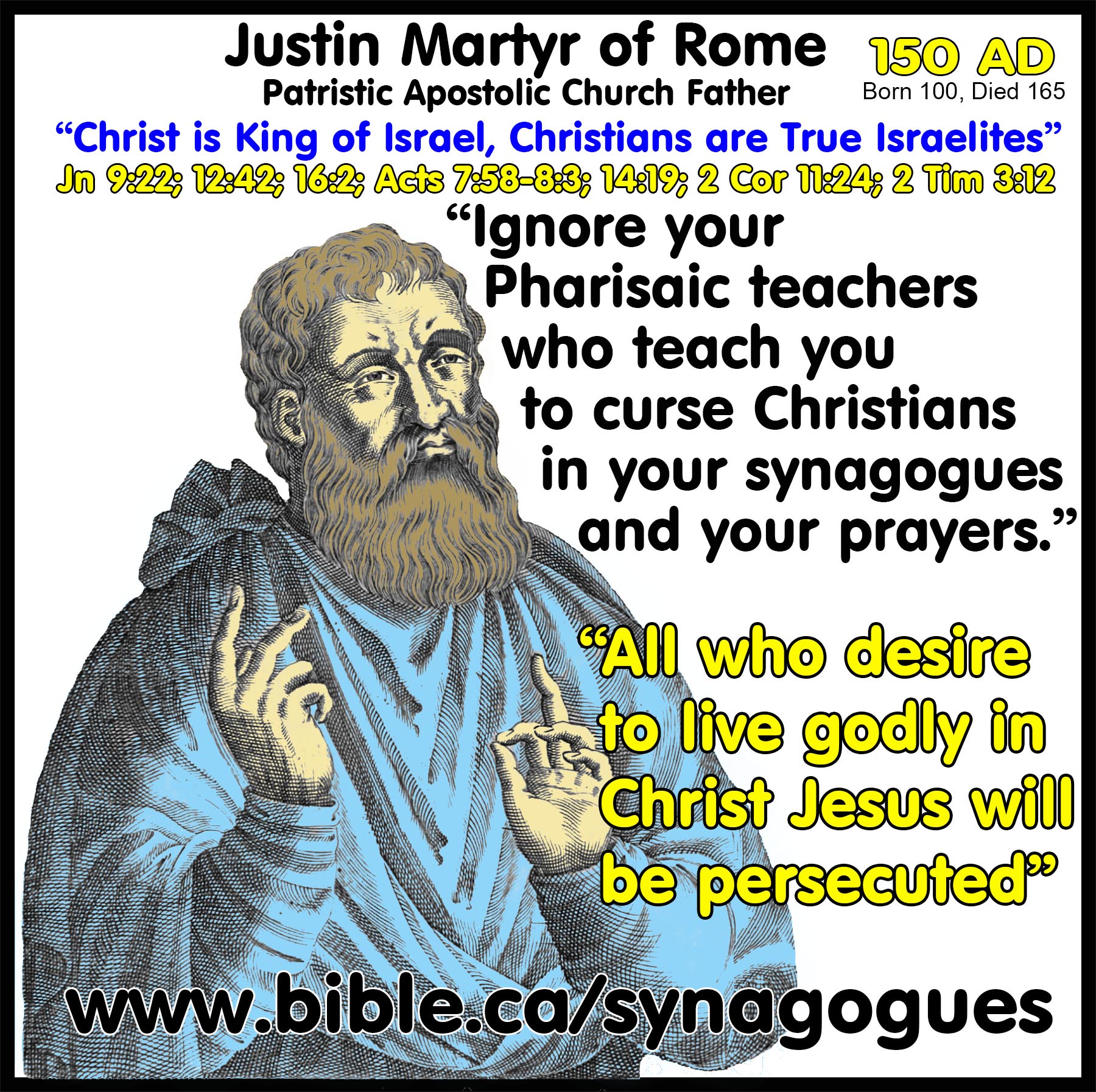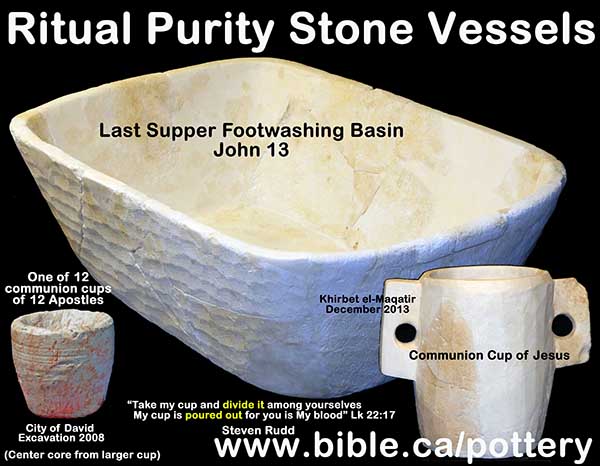From Temple to Synagogue to Church
The Jewish Synagogue was the prototype of the Christian church in worship and function
God’s Eternal plan: 605BC-33AD
“Archeology is an incomplete and flawed science when its conclusions are isolated from literary sources.” (Steven Rudd, 2017)
“Every time you stick a shovel in the ground in Israel, you dig up a Bible story” (Steven Rudd, 2017)
“Archeology without a Bible foundation is just a pile of worthless sand.” (Steven Rudd, 2017)
“What you read in THE BOOK you find in the ground.” (Steven Rudd, 2017)
Author’s Preface and Introduction:
The very first Synagogue on earth was the “Great Basilica Synagogue of Alexandria (Egypt: 280 BC - 117 AD) referenced by Philo in 38 AD, which the Jerusalem Talmud in 400 AD says Hadrian destroyed in 117 AD. Synagogues originated in 280 BC at Alexandria, Egypt as a direct result of Ptolemy II translating the Hebrew Torah in the Greek Septuagint. In fact, by Philo 38 AD, Explicitly dated the origin of Synagogues to 262 BC in Egypt. By the time of Jesus, there were thousands of synagogues in the world and more than 400 in Jerusalem alone. The Greek Tanakh (LXX) was the “standard issue, Jerusalem certified” translation used in every synagogue because Hebrew was functionally extinct in the world by 100 BC. This book, published in May 2017 AD by Steven Rudd identifies 54 second temple period synagogue buildings from archeological top plans, inscriptions and literary sources. For the Jew, this book provides an historically and scientifically accurate view of their amazing Hebrew faith and worship in the ancient synagogue as they transitioned away from Temple worship. Indeed most Jews are unaware that Mosaic Judaism (1446 BC – 70 AD) went irrevocably extinct with the destruction of Herod’s temple. Jewish weekly sabbath day synagogue worship is nowhere to be found in the inspired Tanakh and is as much a human origin, manmade system as weekly Friday worship in a Mosque. For the Christian, this book provides the tools and evidence to prove that the church of the first century was an exact replica of the Jewish Synagogue which YHWH adopted, certified and “rubber stamped” with His approval in the pages of the 27 New Testament books of the Christian Bible. The great prophecy: “Out of Egypt did I call my Son”. Moses and Israel were called out of Egypt (1446 BC), Jesus was called out of Egypt (1 AD), and the church (33 AD) via Synagogues that began in Egypt in 280 BC, were called “Out of Egypt”.
See also: Synagogues originated at Alexandria Egypt in 280 BC spawned by the Septuagint
|
It was God’s providential plan at the beginning of the Babylonian captivity in 605 BC to prepare the children of Abraham for the coming of Jesus their Messiah through the synagogue which was the prototype of the Church of Christ which began on resurrection Sunday morning on 5 April 33 AD. It was then that God’s eternal plan in the Garden of Eden was fully realized in a gradual historic transition from patriarchal worship, to temple worship, to synagogue worship and finally the church. Archeology without a Bible foundation is just a pile of worthless sand. Without faith it is impossible to please YHWH and without faith in the historical accuracy of the New Testament it is impossible to discover the origin and purpose of Synagogue worship in relation to G-d’s eternal plan. |
See also: God’s eternal plan: The providential transition from Temple to Synagogue to Church
The Synagogue was a prototype for the church in architecture, worship and function:
Not only did the Church borrow all the essential architectural features of early synagogues, like the Mikveh (full immersion baptistry), it also used the synagogue as an exact prototype of both function and worship.
|
The Synagogue was the prototype for the church in form, function and worship.
See also: architectural prototypes: Master Chart #1 See also: Worship prototypes: Master Char #2
|
Let me guide you with unwavering faith in Christ and the inspiration of the 66 Books of the Bible, into the truth about the origin and purpose of Synagogues. As Jesus the messiah frequently said to His listeners, “He who has ears, let him hear”. Welcome to my Museum of 56 Second Temple synagogues that existed before 70 AD. Steven Rudd, May 2017 AD. MORE PREFACE: Continue reading preface below
Continue reading preface and introduction at bottom of this page after quick links section
Master List of Second Temple Synagogues
|
Master List of Second Temple Synagogues (Before 70 AD) By Steven Rudd |
Go to: |
||||
|
Synagogue Occupation Date SOD (SOD) Synagogue Occupation Date = Excavation date + Inscriptional date + Literary date |
|||||
|
# |
City |
SOD |
Excavation |
Inscription |
Literary |
|
Adramyttium |
59 BC |
|
|
||
|
2 |
Alexandria |
262 BC |
|
||
|
3 |
Antioch, P. |
50 AD |
|
|
|
|
4 |
Antioch, Syria |
50 AD |
|
|
|
|
5 |
Apamea |
59 BC |
|
|
|
|
6 |
Athens |
50 AD |
|
|
|
|
7 |
Athribis |
194 BC |
|
|
|
|
8 |
Berea |
50 AD |
|
|
|
|
9 |
Caesarea |
70 AD |
|
|
|
|
10 |
Cairo |
246 BC |
|
|
|
|
11 |
Cana |
40 BC |
|
||
|
12 |
Capernaum |
30 AD |
|
||
|
13 |
Corinth |
50 AD |
|
|
|
|
14 |
Crocodilopolis
|
240 BC |
|
|
|
|
15 |
Cyrene |
33 AD |
|
||
|
16 |
Damascus |
50 AD |
|
|
|
|
17 |
Delos |
250 BC |
|||
|
18 |
Dor |
41 AD |
|
|
|
|
19 |
76 BC |
|
|
||
|
20 |
Galilee |
30 AD |
|
|
|
|
21 |
Gamla |
76 BC |
|
||
|
22 |
Gush Halav |
78 BC |
|
||
|
23 |
Halicarnassus |
20 BC |
|
|
|
|
24 |
Herodium |
66 AD |
|
|
|
|
25 |
Iconium, P. |
50 AD |
|
|
|
|
26 |
Jericho |
75 BC |
|
||
|
27 |
Jerusalem |
169 BC |
|
||
|
28 |
Judea |
100 BC |
|
|
|
|
29 |
Laodicea |
76 BC |
|
|
|
|
30 |
Magdala |
50 BC |
|
||
|
31 |
Masada |
78 BC |
|
||
|
32 |
Migdol |
50 BC |
|
|
|
|
33 |
Miletus |
46 BC |
|
|
|
|
34 |
Modein |
132 BC |
|
||
|
35 |
Nazareth |
30 AD |
|
|
|
|
36 |
Nesos (Alexandrou) |
218 BC |
|
|
|
|
37 |
Nitriani |
139 BC |
|
|
|
|
38 |
Ostia |
50 AD |
|
||
|
39 |
Pergamum |
59 BC |
|
|
|
|
40 |
Philadelphia |
50 AD |
|
|
|
|
41 |
197 AD |
|
|
||
|
42 |
Qiryat Sefer |
90 BC |
|
||
|
43 |
134 BC |
|
|
||
|
44 |
Rome |
54 BC |
|
|
|
|
45 |
Salami |
50 AD |
|
|
|
|
46 |
Sardis |
49 BC |
|
||
|
47 |
Schedia |
240 BC |
|
|
|
|
48 |
31 BC |
|
|
||
|
49 |
Smyrna |
50 AD |
|
|
|
|
50 |
Theodostos |
18 BC |
|
|
|
|
51 |
Thessalonica |
50 AD |
|
|
|
|
52 |
Thyatira |
50 AD |
|
|
|
|
53 |
Tiberius |
66 AD |
|||
|
54 |
Xenephyris |
139 AD |
|
|
|
Synagogue Excavation Sites
|
|
EXCAVATIONS Ancient Synagogue Site Plans By Steven Rudd |
||
|
Synagogue Top Plans |
|||
|
|
|||
|
|
|||
|
|
|||
|
|
|||
|
|
|||
Synagogue Inscriptions
|
INSCRIPTIONS Ancient Synagogue Inscriptions Stone and Papyri By Steven Rudd |
|||
|
Synagogue Inscriptions |
|||
|
|
|||
|
|
|||
|
|
|||
|
|
|||
|
|
|
||
|
|
|||
Synagogue Literary Sources
|
LITERARY SOURCES Ancient Synagogue Literary Sources Vellum and Papyri By Steven Rudd |
||||
|
Literature |
||||
|
|
||||
|
|
||||
|
Ancient Jewish Literary Sources Non-Biblical, Non-Mosaic first century oral tradition codified into modern Jewish law |
||||
|
|
||||
Author’s Preface and Introduction (continued):
Begin reading at the start of Author’s Preface
Archeology without a Bible foundation is just a pile of worthless sand. Without faith it is impossible to please God and without faith in the historical accuracy of the New Testament it is impossible to discover the origin and purpose of Synagogue worship. This rejection of Jesus as the messiah has produced an absurd consensus among some Jewish and atheistic archeologists that synagogues did not exist before the destruction of the Temple in 70 AD.
False View #1: New Testament historically unreliable:
“New Testament accounts of activities in 'synagogues' do not necessarily reflect the historical reality of the time.” (Ancient Synagogues - Archaeology and Art: New Discoveries and Current Research, Rachel Hachlili, p10, 2013 AD)
False View #2: Synagogues originated in Judea after destruction of temple in 70 AD:
“The destruction of Jerusalem and the Temple was a turning point in the creation of the synagogue, in terms of both architecture and the customs and rituals practiced. The response to the catastrophe of 70 CE was the adoption of Torah reading, study, and prayer as a replacement for the sacrificial cult, making public worship the custom of the synagogue. This new, important, and unique Jewish institution already existed during the Second Temple period.” (Ancient Synagogues - Archaeology and Art: New Discoveries and Current Research, Rachel Hachlili, p4, 2013 AD)
False View #3: Ancient Jews would have believed the Temple and synagogue couldn’t co-exist:
“As long as the Temple existed in Jerusalem, the Jews were careful to avoid any competition with it. ” (Ancient Synagogues - Archaeology and Art: New Discoveries and Current Research, Rachel Hachlili, p16, 2013 AD)
False View #4: No formal synagogue buildings before 70 AD:
“Kloppenborg (2006:239-241) holds that it is possible that Luke ("for he loves our nation and it was he who built us our synagogue.” Luke 7:5) added these verses, thus they do not provide compelling evidence of the synagogue as a building; Luke might be presenting a later Diaspora practice rather than early 1st c. CE Galilean one. The Gospel writings refer to an assembly and make no comments that could clearly testify to the existence of an architectural structure called a synagogue. ” (Ancient Synagogues - Archaeology and Art: New Discoveries and Current Research, Rachel Hachlili, p7, 2013 AD)
False View #5: Archeological excavated synagogues buildings before 70 AD were not used for worship:
“The evidence of structures dating from the first century BCE to the first century. CE at remote sites in the Land of Israel and in the Diaspora, taken together with the terms proseuche, synagogue and beth knesset, indicates that the communal structures we call synagogues served as multipurpose places of assembly (see also Levine 2003a, b). Certainly it is conceivable that the pre-70 CE structures had didactic functions as well as being centres for assembly and for the community, but they were not places of cult or worship. (Ancient Synagogues - Archaeology and Art: New Discoveries and Current Research, Rachel Hachlili, p16, 2013 AD)
The myopic unbelief of these reductionist archeologists lurks on every page of their excavation reports and in all their conclusions. Paul describes them as "always learning and never able to come to the knowledge of the truth." (2 Timothy 3:7) Without any imagination, they simplistically conclude that synagogue worship was a replacement of Temple worship in 70 AD and none existed before this time. Of course they are delighted that such a conclusion trashes the inspiration and historicity of the Christian Bible.
Let me guide you with the spirit of Christ into the truth about the origin and purpose of Synagogues. As Jesus the messiah frequently said to his listeners, “He who has ears, let him hear”. Welcome to my Museum of 56 Second Temple synagogues that existed before 70 AD.
From the Garden of Eden, God purposed to send his Son Jesus Christ the Messiah, to save all mankind through his shed blood on the cross. Nothing in physical Israel’s history was by chance. God’s plan was seen in the prophecy of Daniel 2 in the vision of the five kingdoms, Babylon, Persia, Greece, Rome, Church which spanned a history of 605 BC – 33 AD) God’s eternal purpose in the Garden was the Church. Daniel’s prophecy is about the transition from Mosaic temple worship to the Christian church. God’s plan was to quickly spread the good news of eternal salvation through Jesus’ blood to the entire world but some huge changes needed to take place.
|
The Church was the 5th kingdom of Daniel 2 1. First in the Babylonian captivity and the Persian empire, it spread Jews to every part of the world. 2. Second, God used Alexander the Great in 333 AD to make the Greek universal language of both Jew and Gentile. 3. Third, in 282 BC, God used Ptolemy II to create a “Jerusalem certified” translation of the Hebrew scriptures in Alexandria Egypt for a large population of Jews who spoke exclusively Greek and were “unable to read the Hebrew Bible for themselves”. 4. Fourth, God gave independence back to the Jewish nation for a brief 47 years under the Maccabees (110 - 63 BC) to standardize synagogues worship and ensure each one had a copy of the Septuagint in preparation for the Christian missionaries. |
See also: God’s eternal plan: The providential transition from Temple to Synagogue to Church
|
|
From the archeological record of extant synagogue inscriptions, the first formal synagogue buildings were either converted from houses or built from scratch, at the time of Ptolemy III. (246 BC) Indeed, the three oldest synagogue building inscriptions all dedicate the synagogue to Ptolemy III in the cities of Cairo, Crocodilopolis and Schedia in Egypt. For those who mistakenly place the origin of synagogues in Babylon, there are zero second temple inscriptions, zero excavations and zero early literary sources to offer support for that theory. Go to: Map of Ancient synagogues |
Synagogues did not begin in Babylon during the 605-536 BC captivity
It is widely (and wrongly) believed that synagogues began in Babylon during the captivity of 605 BC in the absence of the temple. However, there are zero references to synagogues in the Old Testament, zero literary references or inscriptions and no archeological site plans for any synagogue in Babylon. The Jerusalem Talmud (400 AD) references the “synagogue of Babylonians” but this was located in Zippori around 160 AD in connection with Rabbi Yose who wrote the Sedar Olam. (Jersualem Talmud, y. Meg. 75B) The Babylonian Talmud (500 AD) references the “synagogue of Shaf VeYativ in Nehardea” at the time of the 605 BC captivity, but this very late source follows a pattern of defining a synagogue as any place Torah is read and is purely conjectural. The tradition that the exiles who were deported with Jehoiachin in 597 BC, hauled stone and dirt from the Jerusalem temple site to build a synagogue in Nehardea is an absurd and impossible fiction. While Josephus records a sizable population of Jews at Nehardea Babylon in the first century who are send their half shekel temple tax to Jerusalem, there is no reference to any synagogue there. (Josephus, Antiquities XVIII, ix 1)
1. “R. Yosé gave instructions to Bar Ulla, the reader of the synagogue of the Babylonians [in Sepphoris/Zippori], “When there is only one scroll of the Torah available, you should roll in front of a curtain.” (Jersualem Talmud, y. Meg. 75B, 400 AD)
2. “In Babylonia there was a tradition that the synagogue Shab we-Yatib in Nehardea had been established by the exiles who accompanied Jehoiakin (T. B. Megillah 29a.” (ISBE, Volume 4, Page 677)
3. “Where in Babylonia [is the Divine Presence]? Said Abbaye: In the synagogue of Hotzal, and in the synagogue of Shaf VeYativ in Nehardea.” (Babylonian Talmud, b. Meg. 29A, 500 AD)
4. “There was a city of Babylonia called Neerda; not only a very populous one, but one that had a good and large territory about it; and, besides its other advantages, full of men also. It was, besides, not easily to be assaulted by enemies, from the river Euphrates encompassing it all round, and from the walls that were built about it. (312) There was also the city Nisibis, situated on the same current of the river. For which reason the Jews, depending on the natural strength of these places, deposited in them that half shekel which everyone, by the custom of our country, offers unto God, as well as they did other things devoted to him; for they made use of these cities as a treasury, (313) whence at a proper time, they were transmitted to Jerusalem; and many ten thousand men undertook the carriage of those donations, out of fear of the ravages of the Parthians, to whom the Babylonians were then subject.” (Josephus, Antiquities XVIII, ix 1)
|
The oldest synagogue inscriptions are from Egypt. There are ten reasons why Synagogues began in Egypt in 280 BC and you are looking at one of those reasons right now! This amazing dedication inscription came from a synagogue building in Schedia Egypt which dates to 240 BC and is one of the oldest known inscriptions in the world! See also: Synagogues originated at Alexandria Egypt in 280 BC spawned by the Septuagint |
The Great Basilica Synagogue of Alexandria, Egypt: 280 BC – 117 AD
|
As early as Philo 38 AD and as late as Mishnah (200 AD) the “Great Basilica Synagogue of Alexandria” was considered the oldest and the largest synagogue in the world as a witness to the birthplace of Synagogues. The Tosefta 250 AD called this second temple synagogue “the Great Glory of Israel”. The Jerusalem Talmud said Hadrian destroyed it. It is also informative that 99% of the oldest synagogue stone inscriptions are written in Greek and not Hebrew.
|
Philo also explicitly dates the origin of Synagogues to 262 BC.
|
Philo’s 300 years like Jephthah’s 300 years! Philo in 38 AD also explicitly dates the origin of Synagogues to 262 BC. This incredible chronological synchronism has been missed by all the scholars! Just as Jephthah’s 300 years (Judges 11:26) gives us the date of the Conquest at 1400 BC, so too Philo’s 300 years gives us the date for the first synagogues IN EGYPT in 262 BC!
|
Greek Septuagint Tanakh in every Synagogue:
|
The Septuagint was the “standard issue Tanakh”, as an “accepted and trusted translation” in every synagogue much like the King James Version is in the Church today. (See also: Greek Septuagint: The Standard Tanakh of every ancient synagogue.) |
All 39 books of the Tanakh translated into Greek by no later than 150 BC (Old Testament):
At the beginning, we stated this was about truth. It is as unreasonable as it is fictional, to think the Jews would only translate the first five books of the Tanakh into Greek, but leave prophets and historical books untranslated into Greek until after the Temple was destroyed in 70 AD. The messianic prophecies in Isaiah so disquiet, anti-Christian Rabbi Tovia Singer, that he claims the book of Isaiah was never translated into Greek by Jews before the second century AD, but by Christians who corrupted it. It is also Ironic that Singer’s book is called, “Let’s get Biblical” when there are ZERO Torah passages that reference any aspect of weekly Synagogue worship. Tovia Singer is not just a “Rebel Rabbi Without a Cause”, he is a “Talmud Teacher without a single Tanakh Text” to validated his Rabbinical Judaism. Even worse, Singer is a “Septuagint Denier”, by both denying atrocities his people have committed in the past against the Septuagint in the 2nd century AD while preparing for the next. His rewriting the facts of history in contradiction to every Septuagint scholar on earth is causing hurt and harm to his own Jewish people who wrongly believe him to be an agent of truth. Singer is driven by logic onto the horns of dilemma: If the Old Testament prophet’s books were translated into Greek before Christ, THEN Jesus is the messiah. So Tovia Singer, is forced into the land of make-believe in direct oppositions to all the world’s top scholars (including fellow Hebrew Emmanual Tov). While he cannot be held responsible for the fictions of his ancestors who said, “the disciples stole the body” of the already risen Jesus, the “Ruminating Rabbinical Rabbi” can be held responsible for this wildly incorrect historical statement he publicly made on the Septuagint, with our inserted comments in green:
"The Septuagint in our hands is not a Jewish document, but rather a Christian recension. [SR: false, all 39 books of the Old Testament were originally translated by Jews by 100 BC, See: Greek Twelve Minor Prophets Scroll 50 BC] The original Septuagint, translated some 2,200 years ago by 72 Jewish scholars, was a Greek translation of the Five Books of Moses alone [SR: true], and is no longer in our hands [SR: false]. It therefore did not contain the Books of the Prophets or Writings of the Hebrew Bible such as Isaiah, from which you asserted Matthew quoted [SR: false, Isaiah was translated into Greek by 150 BC]. The Septuagint as we have it today, which includes the Prophets and Writings as well, is a product of the Church, not the Jewish people. [SR: False, the entire Tanakh was translated by Jews into Greek by 150 BC]… Christians such as Origin and Lucian (third and fourth century C.E.) edited and shaped the Septuagint that missionaries use to advance their untenable arguments against Judaism [SR: false, it was Jews, not Christians who began corrupting the LXX until they finally rejected it totally]. In essence, the present Septuagint is largely a post-second century Christian translation of the Bible [SR: totally false], used zealously by the Church throughout its history [True: The first century Christians used the Jewish Greek Tanakh to convert ten’s of thousands of Jews to Christianity] as an indispensable apologetic instrument to defend and sustain Christological alterations of the Jewish Scriptures [SR: False]… Accordingly, the Jewish people never use the Septuagint in their worship or religious studies because it is recognized as a corrupt text [SR: False, the LXX was the standard text in every synagogue in the world, including Judea before Christ was born]." (Let's Get Biblical, Tovia Singer, The Virgin Birth: A Christian Defends Matthew by Insisting That the Author of the First Gospel Relied on the Septuagint When He Quoted Isaiah to Support the Virgin Birth, vol 2, p52, 2014 AD)
Remember, functional Hebrew was essentially extinct in 100 BC. Even the Jewish people in Judea couldn’t speak Hebrew, except for the Jerusalem temple elites (Sadducees and High priests) Top Septuagint authority Emanuel Tov (Jewish) and others comment:
Isaiah Translated by 150 BC:
1. “Since the Prophets and several of the Hagiographa were known in their Greek version to the grandson of Ben Sira at the end of the 2nd century BCE, we may infer that most of them were translated in the beginning of that century or somewhat earlier. … Chronicles is quoted by Eupolemos in the middle of the 2nd century BCE, and Job by Pseudo-Aristeas in the beginning of the 1st century BCE. The translation of Isaiah contains allusions to historical situations and events that point to the years 170-150 BCE." (Textual Criticism of the Hebrew Bible, Emanuel Tov, p131, 2012 AD)
2. "the translation of Isaiah is more context-related. It is to be dated—with Seeligmann—to the early Maccabean period, i.e. in the middle of the second century … The possibility cannot be excluded that the Isaiah-LXX involves an updating revision of an older translation. I consider it unlikely that the most important prophetic book would be translated so late. The prologue of Sirach, 2 Maccabees 2:13 and the colophon of Esther demonstrate that the very period, during and after the Maccabean revolt, that led indirectly to a strengthening of Jewry in Egypt, was an epoch of intensive translation activity into Greek, not only in Egypt, but also in the motherland. One can well understand the complaint of the grandson and translator of Ben Sirach in his prologue about the difficulty of such translation from Hebrew into Greek. But apparently in this period many Jews did not flinch from this labour. This series of new translations, which created an entirely new literary corpus, was an intellectual accomplishment of the first order. (The Septuagint as Christian scripture : its prehistory and the problem of its canon, M. Hengel, R. Deines, M. E Biddle, p85, 2002 AD)
Synagogues used the Greek Tanakh before Messiah Jesus was born:
1. "there is ample literary evidence for the notion that Scripture was read in Greek in religious gatherings of Greek-speaking communities from the first century BCE onwards." (Hebrew Bible, Greek Bible and Qumran, Emanuel Tov, p184, 2008 AD)
Jews not Christians began tampering and changing their long accepted Greek Tanakh:
2. "Until the second century AD, the Jews universally regarded the Greek translation of the OT as a faithful interpretation of the original Hebrew. Philo and Josephus lauded the Greek version, the Sanhedrin authorized it to be read in the Greek-speaking synagogues, and the apostles quoted from it freely. Russell notes that "before the second century of the Christian religion, no traces can be found of any controversy as to the differences supposed to exist in the Greek and Hebrew texts of the sacred books" (216, n. 129). The unanimous Jewish approval of the LXX during the first four centuries of its existence can only be explained if it was a generally accurate translation of the Hebrew text in circulation during that time. What happened in the second century? The Palestinian Jews suddenly began repudiating the original translation of the Greek OT and replacing it with new translations (by Aquila, Symmachus, and Theodotion). We shall explore the reasons for this presently." (Primeval Chronology Restored: Revisiting the Genealogies of Genesis 5 and 11, Jeremy Sexton, Henry B. Smith Jr. Bible and Spade, 29, no. 2, p 45, 2016 AD)
3. Aquila of Sinope (~130 AD) Gentile, converted then excommunicated as Christian, converted to Judaism: "Aquila’s name must have been common in antiquity since it is attested in the apostolic age. This translator was a gentile by birth and came from Sinope, a Roman colony in Pontus. Epiphanius provides more details about his life.9 He lived during the reign of the emperor Hadrian (117–138) to whom he was related (he was probably his brother-in-law: πενθερίδης, The Dialogue of Timothy and Aquila, 117; πενθερός according to Pseudo-Athanasius in the Chronicon Pascale). Hadrian commissioned him to supervise the building of Aelia Capitolina on the esplanade of Jerusalem and there he was converted to Christianity under the influence of those returning from Pella. However, he was excommunicated [by Christians] since he refused to give up astrology. Out of resentment he underwent circumcision, devoting himself to learning Hebrew in order to translate the Bible into Greek with the aim of displacing the LXX which at the time represented Christian interpretation." (The Septuagint in Context: Introduction to the Greek Version of the Bible, Marcos, N. Fernández, p111, 2000 AD)
Irrefutable proof all 39 books of the Tanakh were translated into Greek before the birth of Christ:
With a plethora of archeological, inscriptional and literary sources, we can be quite certain that all 39 Old Testament books of the Jewish Tanakh had been translated from Hebrew into Greek by no later than 150 BC and quite possibly as early as 260 BC. The scroll of Greek Twelve Minor Prophets dates to 50 BC. So by the time Jesus was born every synagogue in the world had a Greek translation of all 39 books of the Tanakh. Here are two of the oldest collection of fragments of the Septuagint. (Deut 23:24(26)–24:3; 25:1–3; 26:12; 26:17–19; 28:31–33; 27:15; 28:2 and Greek fragments of each of the 12 minor prophets that dates to 50 BC)
“Palaeographically the manuscript [Deuteronomy] has been assigned to the mid-2nd century BC. It is the oldest known manuscript of the Septuagint. It is believed it came from Fayyum, where there were two Jewish synagogues. (Der Text des Alten Testaments, Stuttgart: Deutsche Bibelgesellschaft Würthwein Ernst, p190, 1988 AD).
STUNNING EVIDENCE FOR THE ORIGIN OF THE GREEK MINOR PROPHETS SCROLL:
Regarding the Greek minor prophets scroll, we have 4 inscriptions from the two Jewish synagogues from the Fayyum Region:
The great transition from Temple to Synagogue to Church:
God permitted the Jews self government from the time of the conquest (1406 BC) down to the end of the Judean Kingdom in 587 BC. By God’s choice, the Jews were living under the authority of foreign kings from 605 down to 110 AD.
|
The coin of Antiochus IV Epiphanes |
When Antiochus IV desecrated the Jerusalem temple in 167 BC it triggered the birth of the zealot movement (Hasmonean/Maccabean rebellion), wherein they finally gained full independence in 110 BC until they lost it again when Pompey recaptured Jerusalem 63 BC. This brief period of Jewish independence (110 – 63 BC) was critical to God’s overall plan to ensure every synagogue in the world had a copy of the Septuagint as well as standardizing synagogue worship through the rise of the Pharisees in preparation of the ministry of Jesus and the apostles who preached in the thousands of Synagogues in Judea and around the world. |
400 Synagogues in Jerusalem at the time of Jesus Christ:
The Mishna and Talmud both say there were close to 400 synagogue schools and courts in Jerusalem alone at the time of Christ. The wisdom of God’s plan and His divine providence is seen in the three missionary journeys of Paul. Imagine, for a minute that God never translated the Hebrew scriptures into Greek and never brought about the birth of Synagogues and that all of “God’s eggs were in a single Jerusalem temple basket”. At the time of Christ Hebrew was extinct in the entire world including Judea, with the exception the Temple Sadducees (High priest) who continued to perform temple worship services in Hebrew to an audience who spoke Aramaic and Greek. When Paul went to Asia there were hundreds of synagogues, each of which had a Greek copy of the Old Testament making it easy for point out directly from the Greek Tanakh, that Jesus the Nazarene, [Literally “Jesus the Branch”], was the prophesied “branch of David” and therefore the messiah born of a virgin.
See also: Jesus fulfilled Prophecy: "He shall be called a Nazarene (branch)" Matthew 2:23
Jewish Expectation of the Messiah in the first century:
With thousands of independent and autonomous synagogues in every corner of the Roman world combined with the Roman road system and lawful oversight of the Jews, all that remained was for God to stir the hearts of his chosen people, the children of Abraham.
"Now the people were in a state of expectation and all were wondering in their hearts about John, as to whether he was the Christ," (Luke 3:15)
See also: First Century Jewish Messianic Expectation: As witnessed in the Dead Sea scrolls.
The first century Temple vs. Synagogue rift with different songbooks!
At the time of Jesus there was a rift in both function and fellowship between the Synagogues controlled by Pharisees and the Jerusalem Temple controlled by the Sadducees. As Paul noted in 57 AD, "the Sadducees say that there is no resurrection, nor an angel, nor a spirit, but the Pharisees acknowledge them all." (Acts 23:8) This would drive the larger population of spiritually oriented Jews away from Temple worship towards Synagogue worship. Given the choice of being a passive spectator in a worship service stripped of the reality of the spirit world in a language they didn’t understand vs. being an active participant in a synagogue service where you walked away feeling close and connected with the heavenly realm, it is obvious why there were 400 synagogues in Jerusalem at the time of Jesus.
|
Song of the Sabbath Sacrifice: Never used in Temple worship The temple and the synagogues even used different song books! For example, a total of ten copies of the first century synagogue songbook, “Angelic liturgy” have been found, one at Masada and nine at Qumran. All the scholars on the Angelic liturgy missed two key points: First, the Angelic Liturgy was never used in the Jerusalem temple by Sadducees who didn’t believe in angels, much less to have them sing to them. Second, it was formatted and designed to sung responsively.
See also: Singing in Synagogues: Angelic Liturgy and Acapella Responsive Singing
|
God harvested the spiritual remnant and first fruits of His chosen people:
Weekly assemblies under Temple worship are absent but weekly Sabbath devotional meetings by the “spiritual cream of the Jewish crop” were the pattern Paul looked for when he entered a city, as seen in finding Lydia at the “house of prayer” by the river.
See also: Weekly Sabbath Assemblies in Synagogues absent from Tanakh
The Synagogue Mikveh: The “Christian Making Machine”!
Another new feature absent from temple worship but present in Synagogue architectural typology is a full immersion ritual purity mikveh. As part of first century Ritual purity, Jews would immerse every Sabbath before entering the Synagogue. Those at Qum’ran would immerse twice a day! All these immersions for spiritual cleansing from sin had to be repeated under the law of Moses because, It is impossible for the blood of bulls and goats to take away sins." (Hebrews 10:4)
|
In Apostle Paul’s personal case, as a young 20 year-old man when he learned he was fighting God in his mission to imprison Christians, he had been immersed about 250 times in a mikveh, once each Sabbath of his adult life, before entering the synagogue. Three days after believing in Jesus and repenting of his sins on the road to Damascus, Paul entered a mikveh one last time when Ananias told him, “Why do you delay, arise and be baptized [in a mikveh] and wash away your sins”. |
See also: The Synagogue Mikveh for Ritual Purity: The Christian Maker
See also: First century ritual purity stone Vessels: Stoneware cups and wash basins
The blood of Christ brought true forgiveness and ended temple animal sacrifices forever!
Although Paul, as an observant Pharisee, immersed hundreds of times in a synagogue Mikveh and the Pool of Siloam, his immersion into water in the name of Jesus brought him one time for all time true forgiveness of sins and he would never need to immerse again.
|
|
"By this will we have been sanctified through the offering of the body of Jesus Christ once for all. Every priest stands daily ministering and offering time after time the same sacrifices, which can never take away sins; but He, having offered one sacrifice for sins for all time, sat down at the right hand of God, waiting from that time onward until His enemies be made a footstool for His feet. For by one offering He has perfected for all time those who are sanctified. And the Holy Spirit also testifies to us; for after saying, “This is the covenant that I will make with them After those days, says the Lord: I will put My laws upon their heart, And on their mind I will write them,” He then says, “And their sins and their lawless deeds I will remember no more.” Now where there is forgiveness of these things, there is no longer any offering for sin." (Hebrews 10:10-18) |
Confused Christians: Restore temple Sacrifices at the second coming of Jesus?
Premillennialists and all those who oppose “replacement theology” wrongly believe that Jesus will return to earth, rebuilt the Jewish temple and restore physical animal sacrifices. This is one of the most shocking displays of false doctrine on earth today, considering this passage:
"Now where there is forgiveness of these things, there is no longer any offering for sin." (Hebrews 10:18)
Christianity at is foundational core is the full embodiment of “replacement theology” which is summed up in one statement of Jesus Christ himself:
"The Jews then said to Him, “What sign do You show us as your authority for doing these things?” Jesus answered them, “Destroy this temple, and in three days I will raise it up.” The Jews then said, “It took forty-six years to build this temple, and will You raise it up in three days?” But He was speaking of the temple of His body. So when He was raised from the dead, His disciples remembered that He said this; and they believed the Scripture and the word which Jesus had spoken." (John 2:18–22)
See also: Replacement theology is pure Christianity
See also: God’s eternal plan: The providential transition from Temple to Synagogue to Church
|
Rapture invented by John Darby in 1830 AD Premillennialists and Dispensationalists also believe in one of the recent innovations of Christian theology, known as the Rapture.
See also: Rapture doctrine is false doctrine! |
The transition from Temple worship to Synagogue to the Church of Christ Complete!
Yes, God’s plan was now complete and the existing network of highly organized and established Synagogues throughout the world provided the perfect springboard for the church. The transition from Temple to synagogue to church was complete. At this early stage, church assemblies on the first day of the week and synagogue assemblies on the 7th day of the week provided an opportunity for both groups to worship in the same synagogue building on two different days in peace! After all, most of those Jews who converted to Christianity had contributed to and supported the synagogue building and worshipped there from infancy!
Jewish Persecution Arises in 36 AD:
|
Before his conversion, Paul went looking for Christians in the Jewish Synagogues: “I went from one synagogue to another [looking for Christians] to imprison and beat those who believe in you.” Acts 22:19. Of course, as time went on Christians were finally expelled out of the synagogues and met in homes or rented rooms. In 150 AD Justin Martyr documents the hostility between Christians and Jews. In 614 AD, the Aramaic Chronicles of Theophanes the Confessor document how Jews helped kill 90,000 Christians in Jerusalem. A few short years later, it was reported that when Muhammad arrived in Jerusalem whom the Jew’s initially thought was the Messiah, until they saw him eat camel meat. |
|
It’s time to heal the long rift with mutual understanding and the love of Christ. Today, Christians work peacefully together with Jews in mutual co-operation on a wide range of areas of mutual interest including world peace, the global economy and Biblical archeology. Old wounds are now healed, but not completely as there is still more work to do.
The Book of James: The Christian Diaspora Moral Guide of 36 AD
The book of James (apostle, son of Zebedee, brother to John, one of “the sons of thunder”) was written in 36 AD to equip the fledgling Christians through their first “Christian diaspora” in 36 AD. (Acts 8) The book of James was one of the first New Testament books written as a morality and conduct manual for the new Christians. James 2:1 even calls the Christian assemblies [Gr: ecclesia] a “synagogue” [Gr: synagoge] and invokes the familiar imagery of small room lined on three sides with benches where women and men worshiped together as families among other men of the same trade. Older sat higher and younger sat lower. An then there was the “seat of Moses” and the footstool that James warned about showing partiality in seating choices (Jas 2). Jesus spoke about this same seat of Moses and if you know where to look the New Testament is full of allusions to synagogue worship, like when Peter wanted his whole body ritually cleansed with water in a Mikveh but Jesus said all he needed was his feet washed. (Jn 13:9) James was beheaded a few years later by Herod in Acts 12 making his message all the more relevant to the early church.
|
|
The Holy Grail! First century ritual purity was adopted by Jesus in the institution of the Lord’s Supper by likely using stoneware vessels including cups and foot washing basins.
See also: Ritual purity stone Vessels: Stoneware |
|
Synagogue architecture present in every church today:
In 38 AD, Philo reports the Great Synagogue in Alexandria was a basilica, which throws all the current theories of the origin of the Church basilica design out the window. While the Byzantine church is usually the focus of architectural comparisons with the early Synagogue, every church on earth today has physical architectural remnants of the ancient synagogue. While all these features are not present in all the varied buildings of the Churches of Christ, every home church has an understood architectural pattern of “where the preacher stands” when he leads and the table, however crude, that the elements of the communion rest upon. The Christian church will forever show vestiges of it ancient Jewish heritage formulated in Egypt. After all, this was all part of God’s eternal plan from the beginning.
1. The Synagogue Mikveh became the Church baptistry
2. The Synagogue bema of Ezra became the Church Pulpit
3. The Synagogue Niches & Ark of The Scrolls became the Church Apse
4. The Synagogue Table of the Scrolls became the church Communion Table
The first church buildings were erected in the early Byzantine era around 327 AD. The author has excavated one of the earliest churches at Khirbet el-Maqatir (biblical Ephraim of John 12) that dates to 375 AD. This early church shared many of the architectural features of first century synagogues including a full immersion baptistry (mikveh), double columns and a bema (raised area where the readings were done). In a long list of ways, the early church in both form and function was a mirror replica of the Jewish synagogue.
See also: Octagonal and Basilica Byzantine Church Architecture
|
Synagogue Architectural Typology incorporated into the Christian Church
See also: Introduction to synagogue architecture
|
|||
|
Architecture |
Probable Mosaic origin |
Synagogue Typology |
Church Typology |
|
Mikveh (baptistry) |
Tabernacle and Temple Brass was basin for cleansing |
Every synagogue had a nearby Mikveh for full immersion for ritual purity. Many Jews became Christians in their synagogue Mikvehs. |
Mark 16:16; Acts 2:38; 22:16; 1 Pe 3:21 Ritual purity by washing away sins through the blood of Christ in obedience to the great commission: Mt 28:18-19. |
|
Freestanding columns |
Solomon’s temple freestanding pillars: Jachin and Boaz |
Freestanding columns at Herodium and Magdala |
Antitype of Individual Christians and the Church as a Pillar of Truth |
|
Bema (raised area) |
Ezra’s platform on top of which he read the Law (Torah) Nehemiah 8:4 |
Raised are in center where the reader or speaker would stand |
Prototype of the Pulpit: Raised area at front where preacher stands |
|
Synagogue perimeter bench seating |
None |
Center focused benches lining the perimeter of the assembly room. |
Metaphor for our equality in Christ. |
|
Moses Seat (government) |
Moses authority |
Privilege, preference, being first, special recognition. |
Metaphor for pride. Replaced by Christ: Deut 18:18 |
|
Niches and Ark of the Scroll (storage) |
“Ark of Covenant” inside was the ten commandments on the side was the Torah |
“Ark of the Scrolls” wooden cart, cabinet sometimes placed in a niche in a outside wall. |
Architectural Prototype of the Church Apse |
|
Table of the Scrolls |
Table of shewbread |
Stone or wooden table scroll were placed upon during worship services. |
Prototype of the Lord’s supper table |
The Jewish Synagogue prototype of Christian Church Worship and Function:
We conclude with most important and stunning part of this historic and archeological survey. The earliest church was identical in both worship literary and function. With the obvious adjustments in message about the gospel of Jesus rising the third day, they sang the same acapella songs in the same responsive style. The synagogue was called a church and the church a synagogue (Jas 2:1). They both took freewill weekly collections and sent the money to the same city: Jerusalem. They shared the same independent government with a plurality elders and deacons. They preached the same uplifting sermon topics to enrich every day life and endure life’s battles. Even the order of worship was likely identical: opening song, prayer, song, Bible reading, song, eat sacred bread, song, sermon, song closing prayers, Dismissed. Women were not segregated but worshipped with their families on the same places on the same bench every week just like families today have in church with their “don’t sit in my pew” look if anyone so dares.
|
The Synagogue was the prototype of the Christian Church for Worship and Function Prototype See also: Worship prototypes: Master Chart #2 |
|||
|
Prototype |
Jerusalem Temple |
Synagogue |
Church |
|
Who controlled |
Sadducees: |
Not initially, but by 100
BC Pharisees took over control. |
Christians: Jew and Gentile |
|
Weekly attendance |
No (3 times a year) |
Yes: every Sabbath |
Yes: every first day, Sunday. Acts 20:7; 1 Cor 16:2 |
|
Government |
Levitical High priest Sole top authority (like Catholic Pope) |
Democracy: Body of equal rulers (Mark 5:22, 35-36, 38; Luke 8:41, 13:14) |
Democracy: plurality of equal elders/ bishops/ shepherds. 1 Tim 3; Tit 1 |
|
Clericalism |
Yes: Non-priests who entered the Holy Place were stoned. |
No: Any Jew could lead any event in the synagogue. |
No: Every Christian is a priest. Any man can preach, read, pray or officiate communion. |
|
Age of participation |
30 years for priests: Num 4. Ezek 1:1; John the Baptist and Jesus: Luke 3:23 |
Any pubescent boy |
Any baptized boy |
|
Independent and Autonomous |
Yes |
Yes |
Yes until 4th century when the diocese was invented. |
|
Animal sacrifices |
Yes |
No |
No |
|
Focal point |
Outward ritual of sacrifice & libation |
Inward devotion of Torah study & prayer |
Inward devotion of Bible study & prayer |
|
Physical “no go zones” for common Jews in building |
Yes |
No |
Not until the 4th century when the clergy/laity distinction was invented. |
|
Who can access the Torah inside the “Ark” (Bible). |
Only Priests can touch Ark of Covenant. |
Any Jew can access the Ark of Scrolls in the synagogue. |
All Christians have equal access to Bible in church. |
|
Instrumental Music in worship |
Yes |
No |
No. Until 1054 AD |
|
Who conducted public Bible readings in 30 AD |
Priest in Hebrew which no one understood because the masses spoke Aramaic and Greek. |
Any Jew in Greek which all understood |
Any Christian in Greek which all understood |
|
Language of Scripture |
Hebrew |
Greek Septuagint |
Greek Septuagint |
|
Physical worship |
Most sacrifices kept at distance from the people. |
All drew close to with spiritual events equally |
Everyone directly shares the most sacred blood and body in Communion |
|
Bible experts |
High Priest |
Pharisees |
Pulpit ministers, overseers |
|
Names |
temple [hieron] |
house of prayer [proseuche], Synagogue [synagōgē], Church [ekklesia], Temple, House |
Synagogue [synagōgē], Church [ekklesia], Temple, House |
|
Water of purification (Mode) |
Brass Laver (Sprinkling) |
Mikveh (immersion) |
Baptism (immersion) |
|
Water of purification (purpose) |
Brass Laver (remove sin) |
Mikveh (remove sin) |
Baptism: Acts 22:16 (Remove sin) |
|
Clothing after purification (clothed with garments of salvation) |
Garments of salvation: Priests special clothing. |
Mikveh: Isaiah 61:10 (wore white robe after immersion) |
Baptism (“Put on” Christ: Gal 3:26-27) |
|
Legal civil system |
Levitical priests |
Board of Elders |
Christians |
|
Worship liturgy |
Animal sacrifices, song, prayer, bread, incense, candles |
Holy bread, song, prayer, public reading of scripture, preaching, collections |
Break bread, song, prayer, public reading of scripture, preaching, collections |
|
Freestanding Columns |
Solomon’s two freestanding temple columns: (Jachin, Boaz) 1 Kings 7:21 |
The Herodium Synagogue had freestanding columns that were symbolic not structural |
Christians are the freestanding columns and the church is the pillar of truth. 1 Tim 3:15; Rev 3:12. The first church buildings had columns. |
|
Refugee sanctuary |
Yes “horns of altar” 1 Ki 1:50; 2:28 Cities of refuge. |
Yes: Refugee Asylum Sanctuary Status in Synagogues |
Yes: Refugee Asylum Sanctuary Status in Churches |
|
Sacred meals eaten |
Yes Passover |
Yes Passover |
Yes Communion |
|
Common meals eaten |
Yes (priests ate the leftover portion of sacrifices animals) |
No. |
No: Forbidden in |
|
Frequency of eating unleavened bread |
Mazzot: yearly |
Mazzot: yearly |
Communion: weekly |
|
Women segregated in worship |
YES. temple had a separate court for the women, as seen in the Wailing Wall today. |
No: women sat with husbands and children |
No: women sat with husbands and children |
|
Women reading, praying, teaching, leading worship |
No |
No: A woman is seductive (Talmud, b. Ber. 3:5, I.16.F) |
No: Flat forbidden 1 Tim 2:12 |
|
Schools |
No |
Every Synagogue was a school |
Every church is a school |
Conclusion to Author’s Preface and Introduction:
The synagogue was so very different from Temple worship and so very the same as church worship today. The church adopted its format from the synagogue, not the other way around. Let all Christians remember that Jews are the natural branches of the olive tree and we are the unnatural branches grafted in by the blood of Christ. We can all be children of Abraham and worship together the one true God who calls us by His excellence and grace to eternal life in the heavenly realm forever.
"I say then, they (physical Israel) did not stumble so as to fall, did they? May it never be! But by their transgression salvation has come to the Gentiles, to make them jealous. Now if their transgression is riches for the world and their failure is riches for the Gentiles, how much more will their fulfillment be! But I am speaking to you who are Gentiles. Inasmuch then as I am an apostle of Gentiles, I magnify my ministry, if somehow I might move to jealousy my fellow countrymen and save some of them. For if their rejection is the reconciliation of the world, what will their acceptance be but life from the dead? If the first piece of dough is holy, the lump is also; and if the root is holy, the branches are too. But if some of the branches were broken off, and you, being a wild olive, were grafted in among them and became partaker with them of the rich root of the olive tree, do not be arrogant toward the branches; but if you are arrogant, remember that it is not you who supports the root, but the root supports you. You will say then, “Branches were broken off so that I might be grafted in.” Quite right, they were broken off for their unbelief, but you stand by your faith. Do not be conceited, but fear; for if God did not spare the natural branches, He will not spare you, either. Behold then the kindness and severity of God; to those who fell, severity, but to you, God’s kindness, if you continue in His kindness; otherwise you also will be cut off. And they also, if they do not continue in their unbelief, will be grafted in, for God is able to graft them in again. For if you were cut off from what is by nature a wild olive tree, and were grafted contrary to nature into a cultivated olive tree, how much more will these who are the natural branches be grafted into their own olive tree?" (Romans 11:11–24)
Biblical Judaism extinct: The Genealogy problem
Temple worship (Biblical Mosaic Judaism) went extinct in 70 AD not because the temple was destroyed, but because the genealogical records houses in the temple were destroyed making it impossible today to identify the sons of Aaron. There is not a Jew alive today who knows to which of the twelve tribes he belongs. This lack of genealogical records not only prevents Jews from identifying the sons of Aaron to run a restored temple, it also makes it impossible for Jews to identify their future messiah as the “branch of David” and the “Lion from the tribe of Judah”. There two complete genealogical records in the New Testament for Jesus the Nazarene, one traced through Mary and the other Joseph that prove He was the “Branch of David”. Thirteen times Jesus is called “Jesus the NAZARENE” which directly fullfilled the prophecy, "Jesus lived in a city called Nazareth. This was to fulfill what was spoken through the prophets: “He shall be called a Nazarene.”" (Matthew 2:23) There is a phonic wordplay between "Nazarene" [Greek: Naṣrat] and "branch" [Hebrew: nēṣer] Isa 11:1 so that when Jesus was introduced at “Jesus the Nazarene” in Greek, it sounded like Jesus the Branch” in Hebrew. When you remove the modern vowels from the words for Nazarene and Branch (netser = nsr) the Hebrew consonants of Naṣrat (Nazareth) and nēṣer are phonetically similar. To illustrate, if you say to a blonde Swedish speaking girl you want to "kiss her" she might slap you because in Swedish "kiss" sounds like "pee". If you order "salsa" in a Korean restaurant, the waiter might chuckle because in Korean "salsa" sounds like "diarrhea". In the same way, the crowds unknowingly went around saying the "Messiah was Jesus the Branch" (Nazarene) which would annoy the temple priests who spoke Hebrew and heard the crossover connection between the Greek town of Nazareth and the Hebrew word for Branch almost immediately. The later Christians, of course, all knew about this phonic word play which Matthew records as a matter of historical fact. So Jesus was 100% certified as being the son of King David and when Jesus rose from the Dead, he was certified as the Messiah and the Son of God. If some time in the future a man claims to be the Jewish messiah it will be impossible for the Jews to certify he is of the tribe of Judah. It is ironic that the only way they can know for sure is if he performs supernatural miracles from God the same way Jesus the Nazarene already did 2000 years ago, yet rejected him. For the Jewish people today, therefore, their messiah is either Jesus Christ or no one!
Author: Steven Rudd, May 2017 AD
Go to Top of Synagogue Start Page.
|
Jesus your messiah is waiting for you to come home! |
|
|
Why not worship with a first century New Testament church near you, that has the same look and feel as the Jewish Synagogue in your own home town. As a Jew, you will find the transition as easy today as it was for the tens of thousands of your forefathers living in Jerusalem 2000 years ago when they believed in Jesus the Nazarene (the branch) as their messiah. It’s time to come home! |
|
By Steve Rudd: Contact the author for comments, input or corrections.
Go to: Main Ancient Synagogue Start Page
